Baby feeding chart canada
Feeding your baby in the first year
Feeding your baby in the first year of life is an exciting adventure for parents and babies alike. It’s about development, nutrition, curiosity, sharing and learning. Attachment also grows as you go about your daily routine with your baby.
You can help your baby develop a lifetime of healthy eating habits with the right start.
The first 6 months
For the first 6 months of life, breastfed babies will get what they need from their mother’s milk.
- Babies who are exclusively or partially breastfed should get a daily supplement of vitamin D, which is available as drops.
- Breast milk has the right amount and quality of nutrients to suit your baby’s first food needs.
- Breast milk also contains antibodies and other immune factors that help your baby prevent and fight off illness.
If breastfeeding is not an option, use a store-bought iron-fortified infant formula for the first 9 to 12 months.
- Formula should be cow milk-based.
- Homemade formulas made from canned, evaporated, whole milk (cow or goat), or any plant-based beverage, are not recommended as a breast milk substitute.
- Homemade formulas can contain harmful germs and lack important nutrients that can make your baby sick.
- Rice, soy, almond or other plant-based beverages, even when fortified, are not appropriate as a breastmilk substitute as they are nutritionally incomplete for infants. There is no evidence that soy-based formula will prevent your child from developing an allergy.
- Soy-based infant formulas should only be used as an alternative to cow milk-based formula if your baby has galactosemia (a rare disorder that will affect how your baby’s body processes simple sugar) or if your baby cannot consume dairy-based products for cultural or religious reasons.
- Talk to your doctor if you are unsure which formula is best for your child.
If your baby has allergies, or if allergies run in the family, see below for specific recommendations about when and how to introduce allergenic foods (such as eggs or peanuts).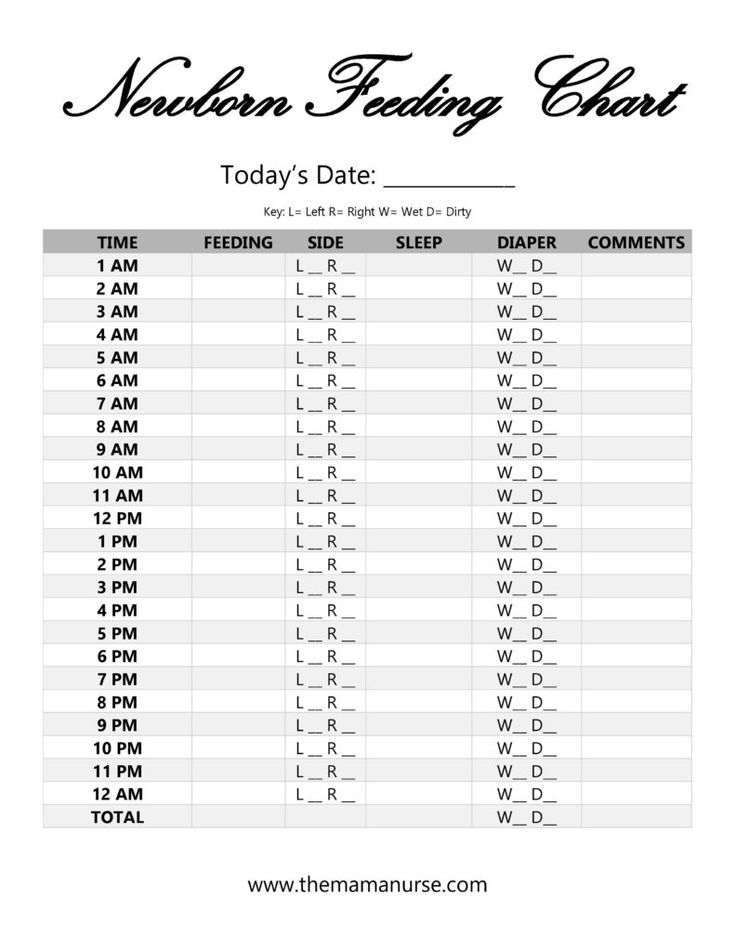
Introducing solid foods
At about 6 months, most babies are ready for solid foods. Along with other foods, you can continue to breastfeed as long as it is comfortable for you and your baby, even well into the toddler years.
You’ll know baby is ready to start other foods when they:
- Can sit up without support, lean forward, and have good control of their neck muscles.
- Ability to pick up food and try to put it in their mouth.
- Hold food in their mouth without pushing it out with their tongue right away.
- Show interest in food when others are eating.
- Open their mouth when they see food coming their way.
- Can let you know they don’t want food by leaning back or turning their head away.
Remember that all babies are different. Some babies may be ready a few weeks before or just after 6 months. However, waiting after 6 months to introduce other foods increases your baby’s risk of iron deficiency.
What foods should we start introducing our baby to first?
There are many ways to introduce solid food.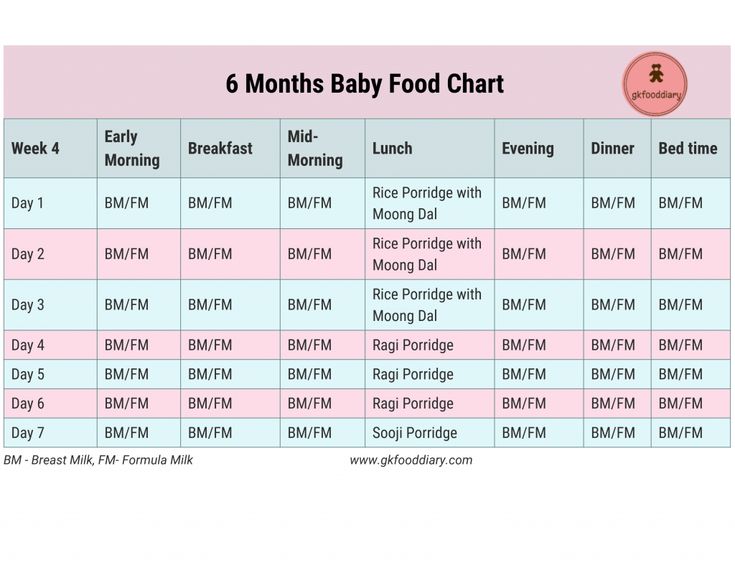 The first foods usually vary from culture to culture and from family to family.
The first foods usually vary from culture to culture and from family to family.
Start with foods that contain iron, which babies need for many different aspects of their development. Meat, poultry, cooked whole egg, fish, tofu, and well-cooked legumes (beans, peas, lentils) are good sources of iron. Store-bought iron-fortified infant cereals such as oat, wheat, barley or rice are also common first foods because they are good sources of iron. Offer iron-rich foods at least twice per day.
Healthy foods that your whole family is eating are the best choice for your baby. You can use commercial baby foods, but read the label to ensure there is no added salt or sugar. A variety of textures (such as lumpy, tender-cooked and finely minced, puréed, mashed or ground), and soft finger foods are recommended. As baby gets older, offer foods with more texture.
| First foods - Around 6 months | |
|---|---|
| Iron-rich foods | Puréed, minced, diced or cooked meat, fish, chicken, tofu, mashed beans, peas or lentils, eggs, iron-fortified infant cereal. |
| After 6 months | |
| Grain products | Iron-fortified infant cereal, small pieces of dry toast, small plain cereals, whole grain bread pieces, rice and small-sized pasta. |
| Vegetables | Puréed, mashed, lumpy or pieces of soft cooked vegetables. |
| Fruit | Puréed, mashed or lumpy soft fruit. Pieces of very ripe soft fresh fruit, peeled, seeded and diced or canned fruit (not packed with syrup). |
| Milk products | Dairy foods like full-fat yogurt, full-fat grated or cubed pasteurized cheeses, cottage cheese. |
| 9 to 12 months | |
| Milk | Whole cow’s milk (3.25%) can be introduced if breastmilk is no longer available, between 9-12 months. After 12 months of age, your baby should not take more than 25 ounces (750 mL) of milk per day. |
Introducing common food allergens
You can start to introduce common allergenic foods—like peanut products or eggs—when you are starting your baby on other solid foods, usually around 6 months of age.
However, if your baby is at high risk of developing an allergy (has allergies such as eczema, or a parent or sibling with an allergic condition) you can start after baby is 4 months old, but not sooner. Talk to your doctor if you are unsure.
Waiting until after 6 months to try to prevent an allergy is not recommended.
- When introducing foods that are common food allergens, it’s best to offer no more than one new food per day. You may want to wait a day or two before you introduce another. This makes it easier to identify a food that may have caused a reaction.
- If your baby is tolerating the allergenic food, continue offering it a few times a week to maintain tolerance.
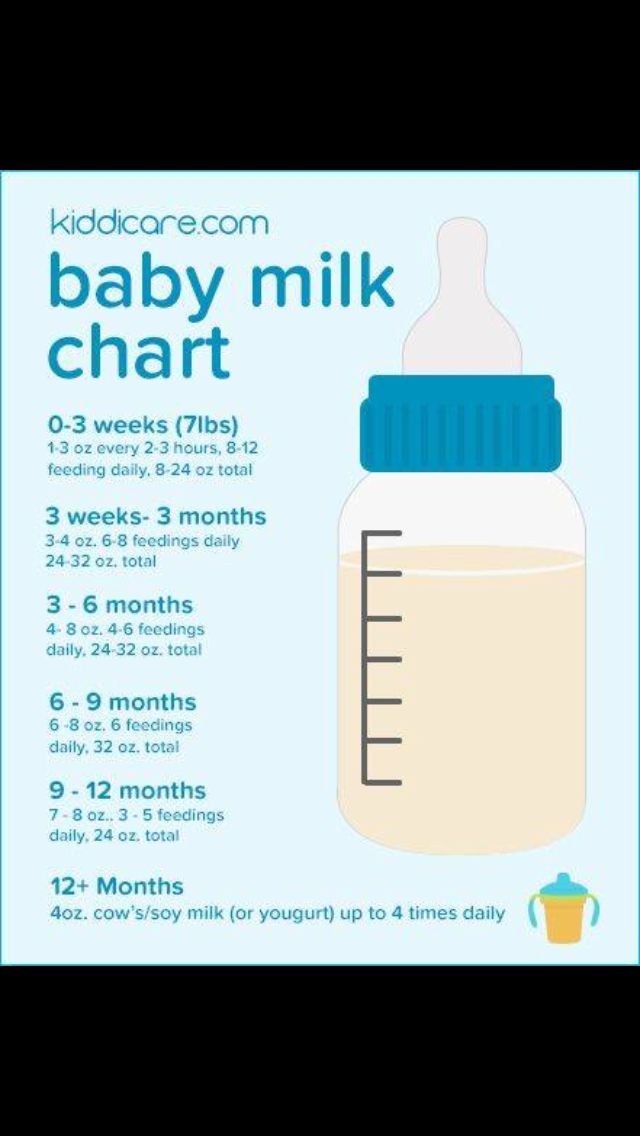 If an allergic reaction occurs, contact your doctor.
If an allergic reaction occurs, contact your doctor. - Make sure these new foods are smooth and small enough so that your baby isn’t at risk of choking. When introducing peanut products to young infants, try mixing a bit of peanut butter with some water, breast milk, or a puréed fruit or vegetable that your baby has had before. For older infants, spread a bit of smooth peanut butter on a piece of thin toast crust or offer a peanut puff product.
How much should I feed my baby?
Follow your baby’s cues for how much to feed. Start by offering a teaspoon or two. Don’t rush. Some babies need to try a food many times before accepting it. If she’s not hungry, she’ll turn her head and close her mouth. If she’s hungry, she’ll get excited and open up.
Never trick or coax her to eat more by playing games or offering sweetened foods. Babies who are allowed to follow their own hunger cues are much less likely to overeat later in life.
Try foods with different tastes and textures to help your baby learn how to handle foods in her mouth.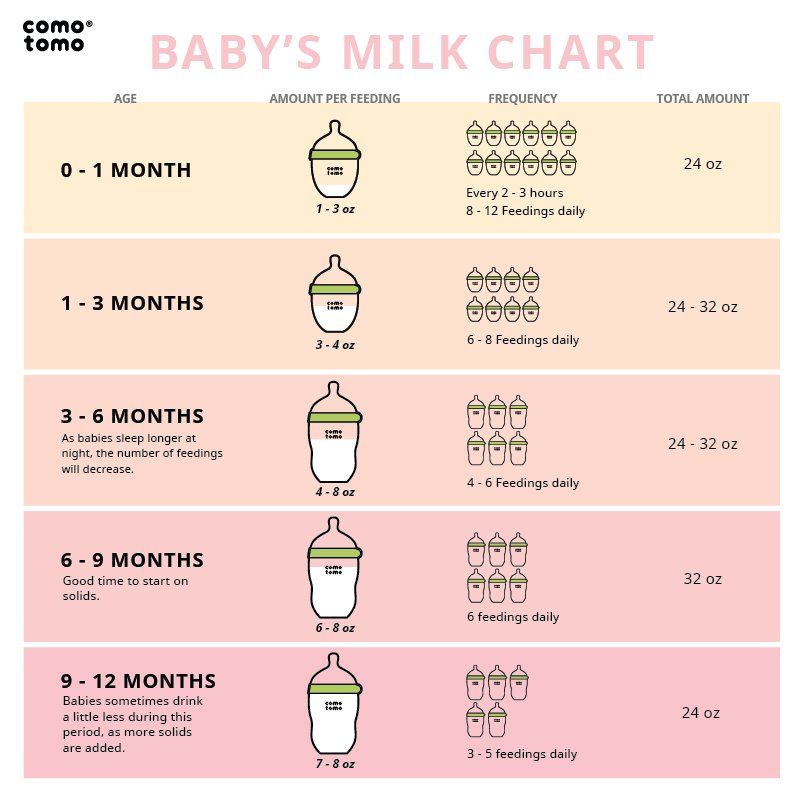
Water and juice
Babies who are exclusively breastfed don’t need extra water. When your baby begins to eat other foods, you can start to offer water occasionally, in an open cup.
- Babies and children don’t need to drink juice. Too much juice can cause diarrhea and can fill up small stomachs, decreasing your baby’s appetite for nutritious foods. Too much juice can also cause early childhood tooth decay.
- Offer water to babies and young children between meals and snacks if they are thirsty. If you choose to offer juice, be sure it is only 100% fruit juice (with no added sugar). Limit juice to 125 mL (4 oz.) per day.
Are there any foods my baby shouldn’t eat?
- Babies shouldn’t be offered sugary drinks or foods, such as candies, soda/pop or energy drinks.
- Don’t give honey to babies under a year old, as there is a risk of infant botulism (food poisoning).
- If you have concerns, please speak to your health care provider.
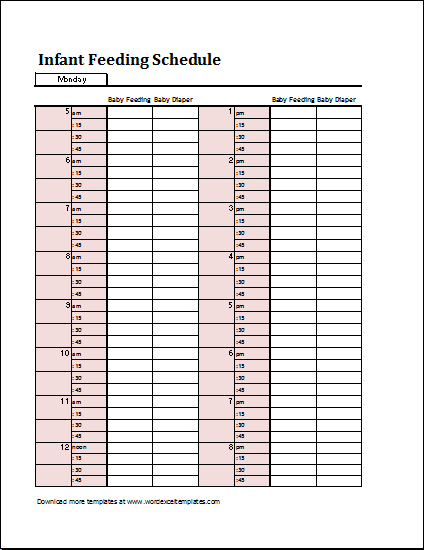
Is there anything else I should know about feeding my baby?
- Always wash your hands before preparing your baby’s food, and wash your baby’s hands before they eat.
- Wipe your baby’s gums with a soft, damp cloth twice a day for good oral health.
How can I prevent choking?
Young children don’t know how to chew food into tiny pieces. And they haven’t learned how to bring a piece of food back up when it gets caught going down. Foods most likely to cause choking are small, round or cylindrical in shape, like hot dogs, whole grapes, carrot slices, seeds and hard candy.
To protect your baby:
- Always supervise them while they are eating.
- Make sure your baby is sitting down to eat.
- Grate raw vegetables such as carrots to make them easier to chew.
- Cook hard fruits and vegetables to soften them.
- Slice round foods such as hot dogs or grapes lengthwise.
- Remove pits from fruits.

- Chop or scrape stringy meat and add broth to moisten it.
- Spread sticky foods like nut butters thinly on a cracker or toast rather than bread.
- Don’t feed your baby whole nuts, raisins, popcorn, gummy candies, hard candy, or fish with bones.
Developmental milestones related to feeding
| Age | Physical milestones | Social milestones |
|---|---|---|
| Birth to 4 months |
|
|
| 4 to 6 months |
|
|
| 6 to 9 months |
|
|
| 9 to 12 months |
|
|
| 12 to 18 months |
|
|
| 18 to 24 months |
|
|
More information from the CPS
Additional resources
Reviewed by the following CPS committees
- Allergy Section
- Nutrition and Gastroenterology Committee
- Public Education Advisory Committee
Last updated: January 2020
How Much & How Often to Feed Your Baby
- Home
- Feeding My Baby
- Formula feeding and Supplementing Centre
- How Much & How Often to Feed Your Baby
Ensure that you know how much and how often to feed your baby, and how to tell whether or not baby is getting enough to eat, with this comprehensive guide from Enfamil A+.
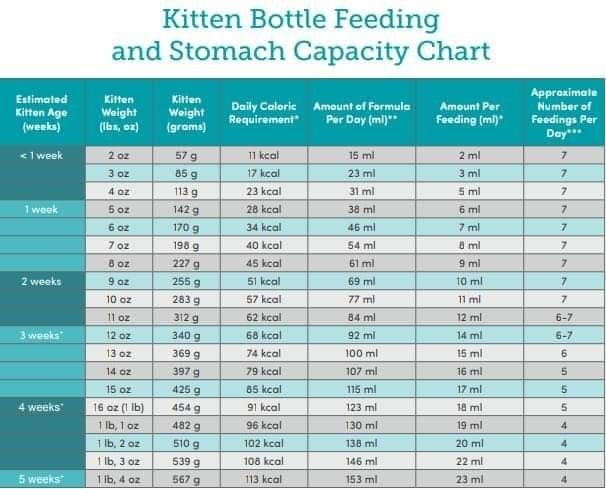
Knowing how much to feed a baby can be tricky. There is a learning curve when it comes to breastfeeding and formula-feeding, and it’s completely normal to have some questions. This comprehensive roundup should provide you with the information you need to feel comfortable and confident knowing how much and how often to feed your baby.
Every baby is different, and feeding amounts can vary depending on the child. In addition, breastfeeding moms may face separate questions than moms who choose to formula-feed. This article is broken down into a few different sections to answer any and all of your questions about how much your baby should eat:
How Much to Feed a Baby: The Basics
How Do I Know If My Baby Is Hungry?
Breastfeeding: 0-12 Months
Formula-Feeding: 0-12 Months
Baby Feeding Chart: First Year
Tips for Transitioning to Solids
How Much to Feed a Baby: The Basics
Right from the start, your baby needs the right nutrition to support healthy development.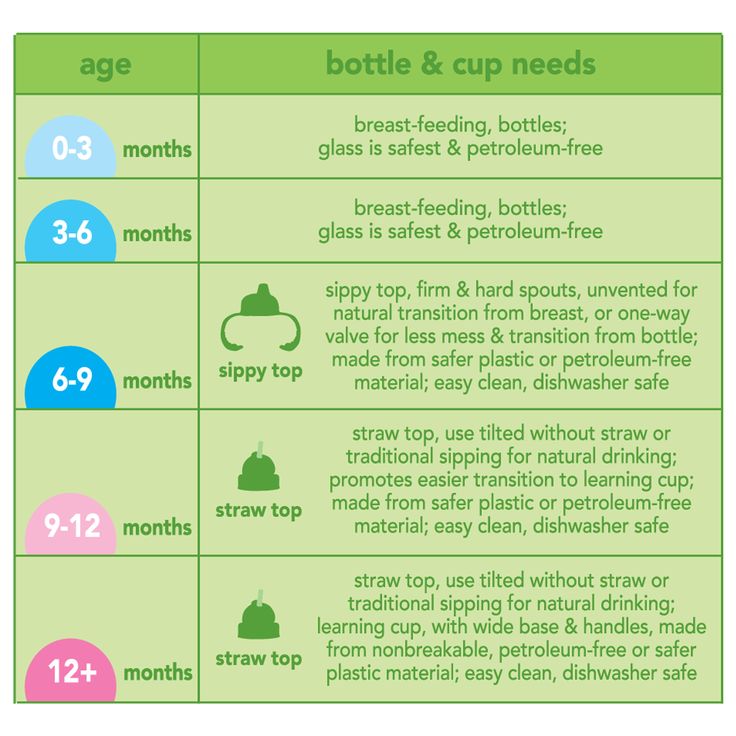 The Canadian Pediatric Society, Health Canada, Breastfeeding Committee for Canada and Dietitians of Canada recommend exclusively breastfeeding for the first six months, as breastmilk will provide your baby with all of the nutrition that they need. After six months you can begin introducing solid foods. They further recommend that if you are breastfeeding, you give your baby a daily Vitamin D supplement of 400 IU. If breastfeeding is not an option, don’t worry: Infant formula like Enfamil A+ is designed to meet the nutritional requirements your baby needs.
The Canadian Pediatric Society, Health Canada, Breastfeeding Committee for Canada and Dietitians of Canada recommend exclusively breastfeeding for the first six months, as breastmilk will provide your baby with all of the nutrition that they need. After six months you can begin introducing solid foods. They further recommend that if you are breastfeeding, you give your baby a daily Vitamin D supplement of 400 IU. If breastfeeding is not an option, don’t worry: Infant formula like Enfamil A+ is designed to meet the nutritional requirements your baby needs.
Feeding Highlights for Year One
- For the first six months, breastmilk and/or baby formula will provide your baby with the nutrition they need.
- Initially, most babies do not need breastfeeding and formula feeding schedules. However, they will settle into more of a routine as they get older
- Whether you are breastfeeding or formula-feeding, it is important to listen to your baby’s feeding cues and feed them according to their hunger.

- Around six-months old is when you can begin to introduce solid foods to your baby’s diet (see: Tips for Transitioning to Solids) below.
How Often Should I Feed My Baby?
First things first: let’s talk about how to tell if your baby is hungry. The good news is that whether you’re breastfeeding or formula-feeding, your baby is the single best authority for when they need to be fed and when they are satisfied. Baby’s internal regulator for hunger and fullness is fine-tuned to their particular energy needs. That’s why rigidly counting the ounces of formula or the number of minutes per breastfeeding session isn’t the best way to know if your baby should eat more. Instead, pay attention to cues; behaviour will tell you when baby’s hungry or full. Research shows that when caregivers are responsive to feeding cues, babies will regulate their own energy intake.
SIGNS YOUR BABY IS HUNGRYCrying : A hunger cry is usually short, low-pitched and rises and falls.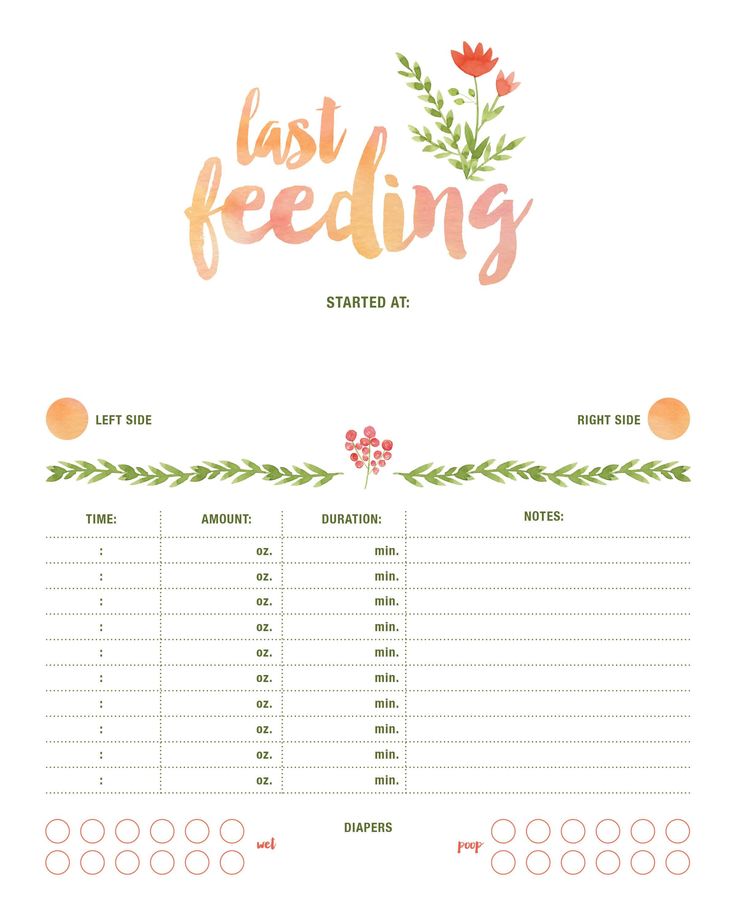 But crying is actually one of the later signs of hunger. You’ll notice other behavioural cues first (such as those below). By the time a hungry baby is wailing, he may be too stressed to start eating easily.
But crying is actually one of the later signs of hunger. You’ll notice other behavioural cues first (such as those below). By the time a hungry baby is wailing, he may be too stressed to start eating easily.
Waking up and acting restless: Before your baby launches into a full-throated hunger wail, he’ll wake up and move around in his crib. He may also move his mouth and raise his hands to his face.
Sucking on his fist or smacking his lips: If ybreastfed baby when you see these signs, rather than waiting, he’ll latch on more easily.
Rooting: During your baby’s first weeks, when you stroke his cheek, his natural reflex will be to turn toward the bottle or breast and make sucking motions with his mouth. After 4 months of age, rooting becomes a voluntary action rather than a reflex.
Opening his mouth while feeding: Translation: “More, please!” A hungry baby may continue to show interest in sucking even after finishing the first breast or bottle.
Smiling during feeding: Babies older than 4 months will show their interest in continuing to eat by looking at you and smiling as they feed.
SIGNS YOUR BABY IS FULLClosing lips: Just as a hungry baby suckles readily, a full baby zips his lips, as if to say, “No more, thanks."()
Turning his head away: A more forceful version of closing his lips is to move his entire head away from the food source. If your baby turns away from your breast or a bottle, you shouldn’t force him to eat.
Decreasing or stopping sucking: Some full babies will stay latched on to the nipple but not suck any more—at which point, it’s time to gently end the session.
Spitting out the nipple or falling asleep when full: After about 15 to 20 minutes of feeding, a full baby will often act drowsy and may even fall asleep.
Showing increasing interest in surroundings rather than eating: At around 4 months old, many babies begin to get distracted during feedings, as their awareness of the world around them grows.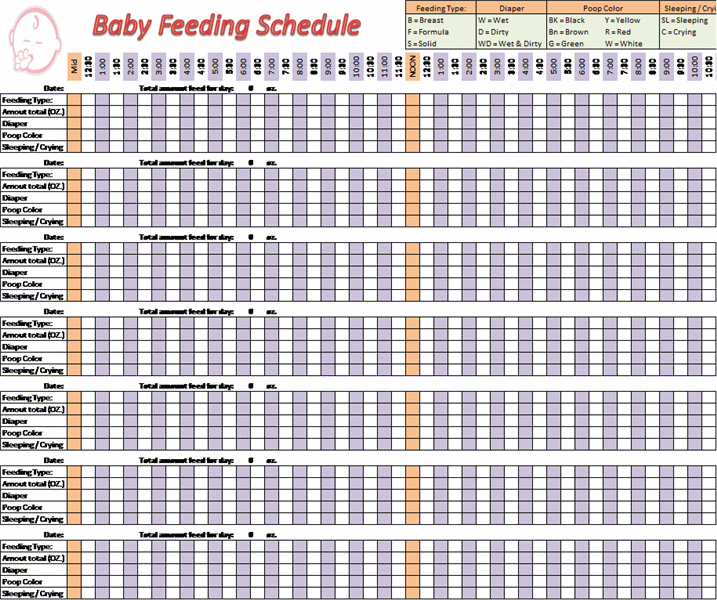 A hungry baby will put this curiosity on hold long enough to feel sated. When he begins looking around more distractedly, it’s a sign he’s had plenty.
A hungry baby will put this curiosity on hold long enough to feel sated. When he begins looking around more distractedly, it’s a sign he’s had plenty.
Breastfeeding: 0-12 Months
You will be breastfeeding “on demand”—whenever your baby is expressing that they’re hungry. As far as knowing how much you should be breastfeeding your baby goes, both the amount of weight they gain and the number of wet diapers (six or more per day) are good indicators of proper nutrition. Every baby is different, but this could be feeding as often as about every two to three hours, or between eight to twelve times per day. Typically, how often a baby will feed decreases over time as they consume more during each feeding. Baby will begin getting additional nutrition from other sources once solid foods are introduced, which may also cause some changes in breastfeeding habits.
Formula-feeding: 0-12 Months
On average, formula-fed babies eat every three to four hours during their first weeks, when their stomach is small.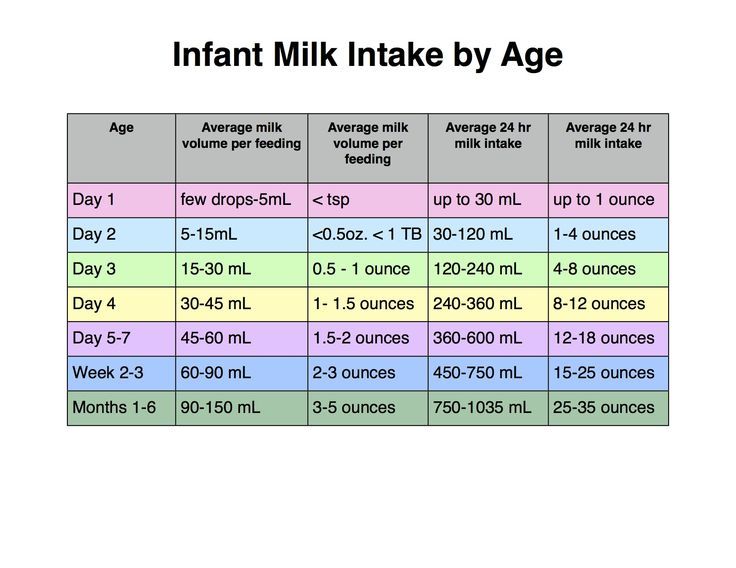 However, after a few weeks the amount consumed at each feeding will increase and the number of feedings will decrease—baby will eat more but less often. Like with breastfeeding, proper weight gain and number of wet diapers are the best indicators of whether your baby is getting enough food.
However, after a few weeks the amount consumed at each feeding will increase and the number of feedings will decrease—baby will eat more but less often. Like with breastfeeding, proper weight gain and number of wet diapers are the best indicators of whether your baby is getting enough food.
My Family Beginnings™ by Enfamil A+
Enroll in our program to receive up to $160 in coupons, plus free baby products and formula samples!
Baby Feeding Chart: First Year
If you are exclusively formula feeding, refer to our baby feeding chart for information on how much formula to feed your baby. Our formula baby feeding chart is a guide to how much newborns should eat, along with how much formula to feed a baby after six months. But remember, these are just averages—your little one’s appetite is always the best guide to how much and how often to feed baby.
| AGE | BOTTLES per day | APPROXIMATE AMOUNT OF FORMULA per bottleper day | |
|---|---|---|---|
| 5 -10 | 59 mL (2 fl oz) - 89mL (3 fl oz) | 410-800 mL (14-27 fl oz) | |
| 4-7 | 89 mL (3fl oz) - 150 mL (5 fl oz) | 590-1050 mL (20-35.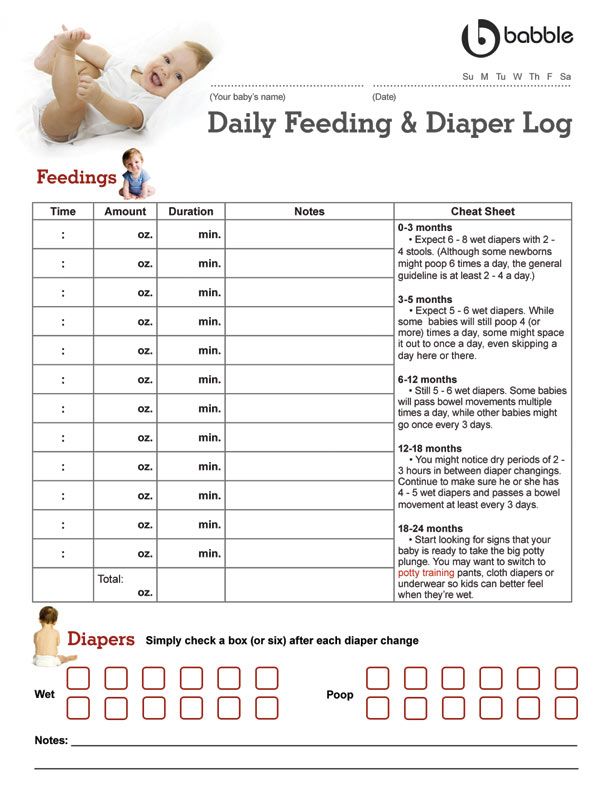 5 fl oz) 5 fl oz) | |
| 4-5 | 135 mL (5 fl oz) - 205 mL (7 fl oz) | 540-1030 mL (18-35 fl oz) | |
| 4-6 | 135 mL (5 fl oz) - 175 mL (6 fl oz) | 540-960 mL (18-32 fl oz) | |
| 3-4 | 175 mL (6 fl oz) - 250 mL (8 fl oz) | 500-750 mL (17-25 fl oz) | |
Tips for Transitioning to Solids
After about six months is when things usually begin to get a little bit more interesting—and varied— as far as it concerns your baby’s diet and feeding schedule, as this is when you will get to introduce and explore different solid foods. According to the Canadian Paediatric Society, there is no particular order in which you should introduce solid foods to your baby, and it does not recommend delaying any particular foods, like peanuts, in order to prevent possible allergies.
- Start slow. Transitioning is a gradual process, and it’s important to give your baby time to adjust.

- Start simple. Single-ingredient foods without sugar or salt will be easier on your baby’s tummy. If they have a negative reaction, it will be easy to determine the source.
- Consider baby cereals to start. Mix one tablespoon of cereal with four tablespoons of breastmilk or formula. It will help make the transition for your baby more gradual.
- As your baby grows more comfortable, slowly introduce vegetables, fruits and meats into their diet. Always consult your doctor before introducing a new food.
- Avoid honey in the first year. In rare cases, it causes infant botulism. Also avoid hot dogs, peanut butter, nuts, popcorn or any other food that could be a choking hazard.
- Feed with a spoon since this will be your one of your child’s primary utensils eventually.
- Always serve the appropriate texture of food for your baby. He may start with pureed food, then move to mashed, chopped and finger foods as he gets older.
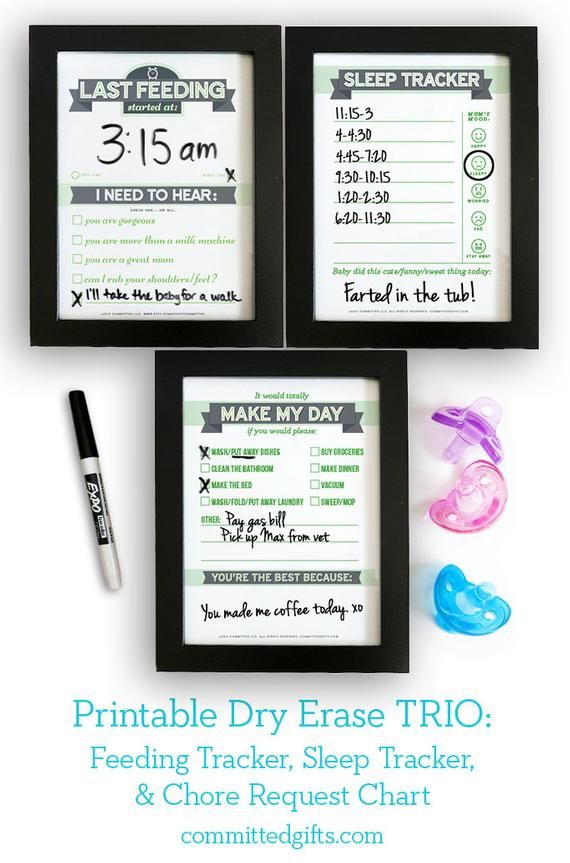
If you’re unsure when to begin, talk to your doctor about when is precisely the right time for your baby to start eating solid foods.
We hope we helped answer your questions on how much to feed a baby. For more information on feeding amounts, explore our Feeding Guide.
Looking for coupons, free baby products and formula samples? Join our My Family Beginnings by Enfamil A+ program today!
Tip: There are formulas for babies with special feeding needs (such as allergies or intolerances).Check out our hypoallergenic baby formula products to learn more.
Join My Family Beginnings
TM by Enfamil A+®What is your Baby’s Due Date or Birth Date?
MonthJanFebMarAprMayJunJulAugSepOctNovDecMonth
Day12345678910111213141516171819202122232425262728293031Day
Year20192020202120222023Year
Leave this field blank
How complementary foods are introduced in other countries
Germany. Complementary foods begin at the age of 5-6 months, the first product is carrot mousse. A week later, it is replaced with mashed potatoes and carrots with the addition of vegetable oil. A week later, meat and fruit juice are added to this puree. It turns out that seven-month-old children receive mashed potatoes from meat, vegetables, juice and vegetable oil. Approximately two weeks after meeting with meat, the baby receives his first porridge. Interestingly, it is immediately recommended to cook porridge with 3.5% whole milk. Fruit juice is added to the finished porridge. A month after the introduction of cereals (approximately about 8 months), fruit and grain purees appear in the child's diet, they are made from grains, fruits and vegetable oil. But cottage cheese, yogurt and other fermented milk products are put aside for the age of over a year: it is believed that they are harmful to children under 12 months old.
Complementary foods begin at the age of 5-6 months, the first product is carrot mousse. A week later, it is replaced with mashed potatoes and carrots with the addition of vegetable oil. A week later, meat and fruit juice are added to this puree. It turns out that seven-month-old children receive mashed potatoes from meat, vegetables, juice and vegetable oil. Approximately two weeks after meeting with meat, the baby receives his first porridge. Interestingly, it is immediately recommended to cook porridge with 3.5% whole milk. Fruit juice is added to the finished porridge. A month after the introduction of cereals (approximately about 8 months), fruit and grain purees appear in the child's diet, they are made from grains, fruits and vegetable oil. But cottage cheese, yogurt and other fermented milk products are put aside for the age of over a year: it is believed that they are harmful to children under 12 months old.
Choose foods for the first feeding
Austria. The first complementary foods are introduced at the age of 5-7 months, babies receive vegetable puree with rapeseed oil.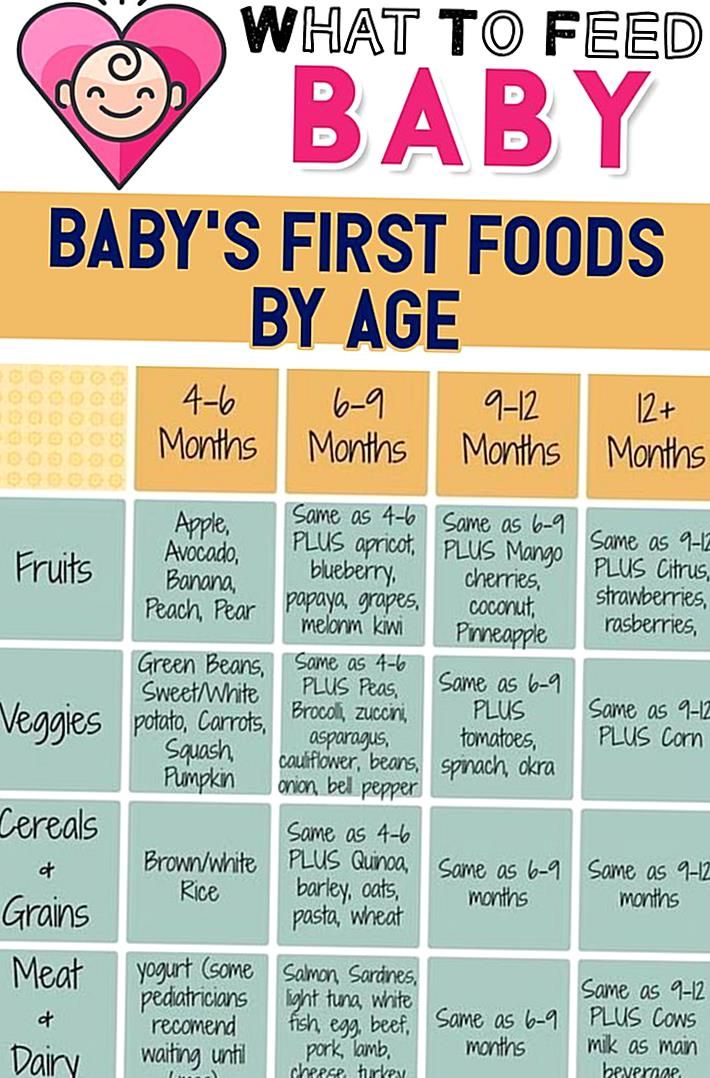 A month later, children are introduced to cereals, a month later - to fruit puree. A month later, fish, meat and even grated nuts appear in the diet of young Austrians. But about milk and dairy products, the Austrians agree with their neighbors, and babies get them strictly after a year.
A month later, children are introduced to cereals, a month later - to fruit puree. A month later, fish, meat and even grated nuts appear in the diet of young Austrians. But about milk and dairy products, the Austrians agree with their neighbors, and babies get them strictly after a year.
France. Young Frenchmen receive vegetable purees with the addition of vegetable or butter as the first food. This happens in about six months. After a couple of weeks, the baby is offered fruit puree. At 8 months, the baby is introduced to meat, fish and boiled mushrooms, from 10 months the baby eats cheese. The French do not like porridge, children get it after a year.
UK. At about 4.5-5 months, children are offered the first complementary foods - a bottle of liquid rice porridge on the water. This is followed by vegetables, fruits, porridge and meat. Dairy products are introduced after a year.
Argentina. Complementary foods traditionally start with yogurt and are given to babies between 5 and 6 months of age. This is followed by fruits, vegetables, cereals and meat.
This is followed by fruits, vegetables, cereals and meat.
Canada. The first complementary food is porridge, age 4-6 months. A month later, vegetable or fruit puree and a little oil are added to the porridge. At 8 months, meat and fish are introduced.
Cuba. The hot tropics, where there is an abundance of fruits all year round, influenced the order of introduction of complementary foods. Start at 5-6 months with fruit puree. Moreover, orange puree is among the first recommended products. Following the fruit puree, meat is introduced into the child's diet (at 6-7 months), and only then cereals.
Spain. At 5 months, babies are introduced to corn and rice porridge, then fruit puree is mixed into the porridge, and only then vegetables and meat are introduced.
Iran. From 4 months, the baby is given a few grains of rice and a couple of sips of lamb broth every day. At 6 months, the first real complementary foods appear - rice porridge with almonds. There are no fruit and vegetable purees, children immediately get pieces of fruit and try to chew them as best they can.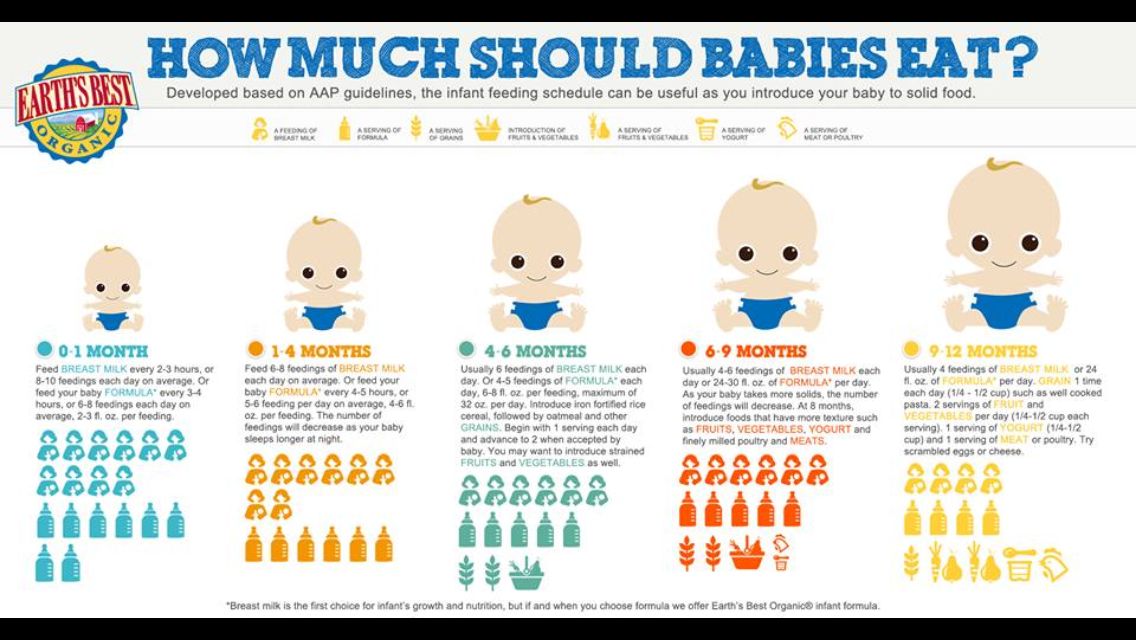 Children are given meat from 8 months, including fatty lamb.
Children are given meat from 8 months, including fatty lamb.
Indonesia. Rice porridge from 3 months, porridge with fruit additives from 4 months. Vegetables from 5 months. Meat and dairy products - after three years.
Sweden. Complementary foods start with cereals at 5-6 months, followed by vegetables, fruits, and from 8 months and meat. Eggs and dairy products are introduced into the child's diet after a year.
Rules for the introduction of complementary foods to a child 4-12 months old: the first complementary foods, menus, charts, tables, principles of nutrition for a baby
Modern principles of complementary feeding of children is a kind of fusion of practical experience and the latest scientific developments. They are based on the recommendations of the European Association of Pediatric Gastroenterologists, Hepatologists, Nutritionists ESPGHAN , the American Academy of Pediatrics AAP and national recommendations of relevant ministries and associations.![]()
Complementary foods: online course
Modern recommendations are based on the analysis of the results of many studies on the composition, timing of the introduction of complementary foods in Europe for healthy full-term newborns, taking into account various aspects of the introduction of complementary foods, its impact on physical and mental development. Timely introduction of complementary foods contributes to the optimal development of all systems and organs of the child, physical parameters, psychomotor development, and the activity of the nervous system. The period of introduction of complementary foods is very important for the growth and development of the child, as well as an outstanding stage in the transition of the child from breastfeeding to feeding from the general table.
- It is inappropriate to develop separate recommendations for the introduction of complementary foods for breastfed or artificially fed children, the approaches in these cases are the same
- Breastmilk mothers remains the gold standard of exclusive breastfeeding for at least 4 months (17 weeks) of an infant's life, up to 6 months (26 weeks) standard of exclusive or predominant breastfeeding
- The digestive tract and kidney function are mature enough for a baby to accept complementary foods at 4 months of age, and between 5 and 6 months the baby develops the necessary motor skills to consume solid foods.
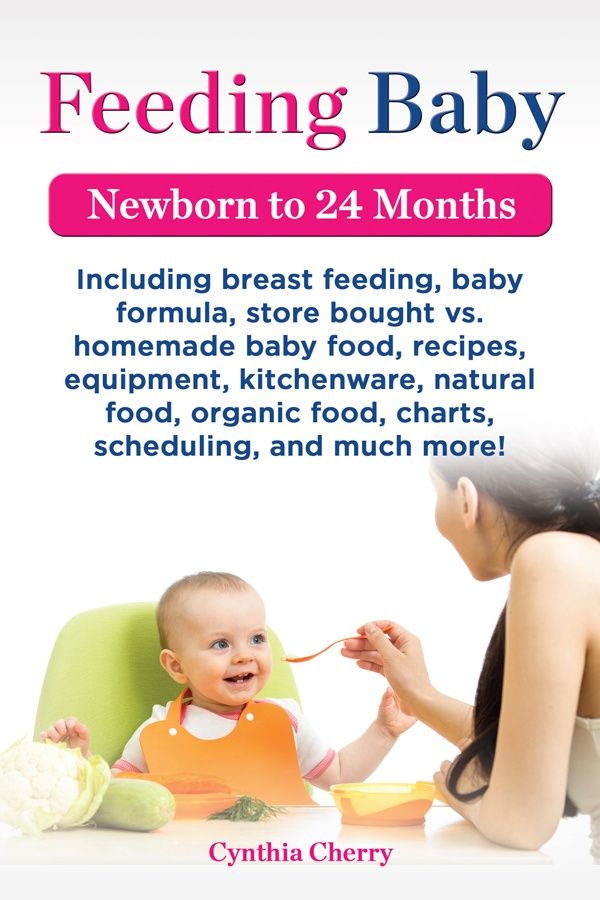 Therefore, at this age, it is important to give food of the right consistency and in the right way
Therefore, at this age, it is important to give food of the right consistency and in the right way - A well-nourished mother can provide all the nutrients, vitamins, and minerals her baby needs through exclusive breastfeeding up to a maximum of 6 months of age
- Some children may need iron supplementation earlier than 6 months
- It is important to continue breastfeeding in parallel with the introduction of complementary foods. This has been shown to reduce the risk of gastrointestinal and respiratory infections, as well as hospitalizations in a child
- When comparing the introduction of complementary foods at 4 or 6 months of age of the infant, no significant differences were found in the effect on his height and body weight, the development of obesity during the first 3 years of life
- At the same time, a high risk of developing overweight and obesity was established with the introduction of complementary foods before 4 months of age
- Complementary foods (solid or liquid food other than breast milk or infant formula) should be started not earlier than 4 months and not later than 6 months
- With age, with the introduction of complementary foods, the child should be offered food varied in texture, texture, taste, smell
- Children have an inborn tendency to distinguish and prefer sweet and salty foods, reluctantly eat bitter, which we cannot change.
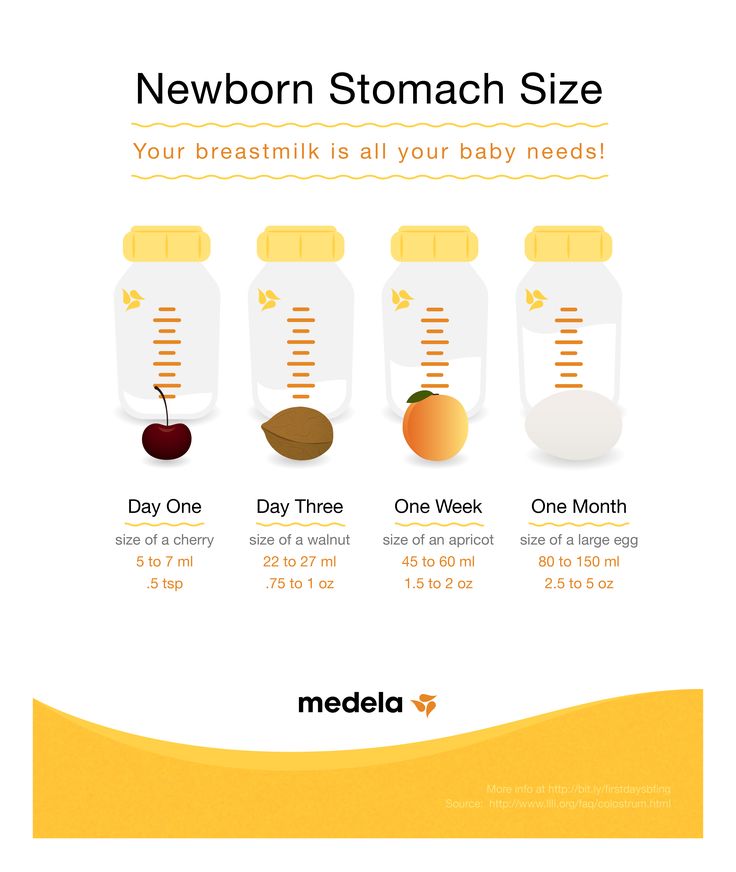 But we can shape and adjust the child's taste preferences through training, systematically offering the child foods with different tastes, including sour, bitter green vegetables
But we can shape and adjust the child's taste preferences through training, systematically offering the child foods with different tastes, including sour, bitter green vegetables - Whole cow's milk is not recommended for children under 12 months of age. The use of cow's milk is associated with the intake of an increased amount of energy, protein, fat, and lower - iron. Therefore, children who consumed large amounts of cow's milk at an early age had a higher risk of developing iron deficiency anemia
- Eating more protein when complementary foods increase the risk of overweight and obesity, especially in individuals with a predisposition to this, so protein intake should not exceed 15% of energy intake during the day
- The baby's requirement for iron is very high during the entire period of complementary feeding, therefore it is necessary to ensure the provision of iron-rich foods, especially for breastfed children
- Allergenic products can be administered from the age of 4 months at any time, since it is during this period that immune tolerance to the allergen is formed.
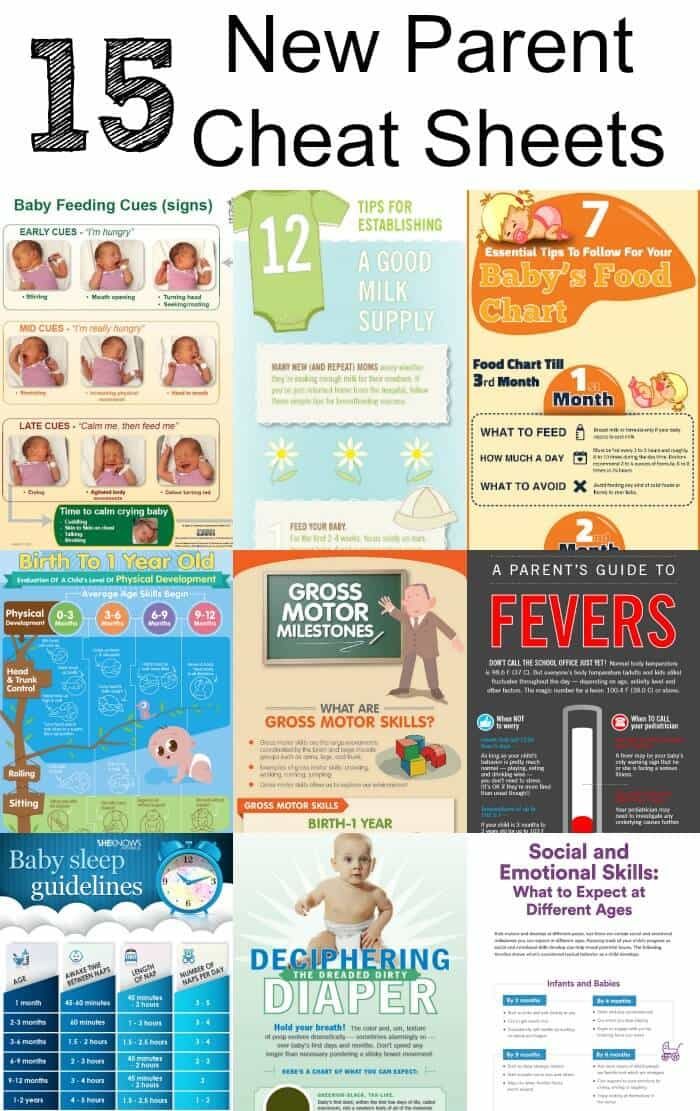 For example, children at high risk of developing allergic reactions to peanuts should be administered at 4-12 months of age under specialist supervision. No relationship was found between the timing of the introduction of allergenic complementary foods and the development of allergic or immunological diseases. However, this does not mean the need for early introduction of allergenic products to everyone, but it emphasizes that there is no need to postpone the introduction of allergenic products after 4 months for a longer period;
For example, children at high risk of developing allergic reactions to peanuts should be administered at 4-12 months of age under specialist supervision. No relationship was found between the timing of the introduction of allergenic complementary foods and the development of allergic or immunological diseases. However, this does not mean the need for early introduction of allergenic products to everyone, but it emphasizes that there is no need to postpone the introduction of allergenic products after 4 months for a longer period; - Gluten can be offered to a child aged 4-12 months, but large amounts of gluten should be avoided during the first weeks after the start of its introduction, thereafter a safe amount has not been established. The type of feeding (breast/artificial) was not identified with the introduction of gluten to reduce the risk of developing celiac disease, type 1 diabetes;
- Sugar or salt should not be added to complementary foods, and sweetened drinks and juices should be avoided.
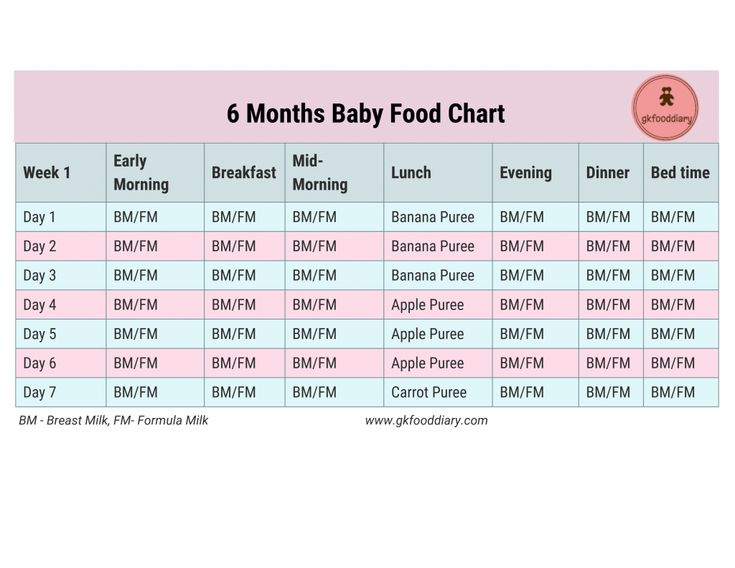 Sugary drinks are liked by babies in the first months, but if they are not given, but after 6 months, the children no longer like them very much. Sugar affects future eating behavior. Sugar is an important factor in the development of caries - it contributes to caries, as glucans can be formed, which increase the adhesion of bacteria to tooth enamel, disrupt the diffusion balance of acid and buffer systems, which ultimately contributes to damage to the enamel.
Sugary drinks are liked by babies in the first months, but if they are not given, but after 6 months, the children no longer like them very much. Sugar affects future eating behavior. Sugar is an important factor in the development of caries - it contributes to caries, as glucans can be formed, which increase the adhesion of bacteria to tooth enamel, disrupt the diffusion balance of acid and buffer systems, which ultimately contributes to damage to the enamel. - Vegetarian diets are contraindicated in young children due to the risk of vitamin B12, iron, zinc, folate, long chain fatty acid, protein and calcium deficiencies, which can lead to irreversible adverse effects and impaired cognitive development;
- Vegetarian diet can be used only under the close supervision of a doctor and nutritionist, with the obligatory additional administration of vitamins B, D, iron, zinc, calcium, proteins, PUFAs, which can ensure the appropriate growth and development of the child.
 It is important that parents should be aware of the risk of irreversible harmful consequences (mental disability, death of the child) that may develop if they do not follow the recommendations of specialists.
It is important that parents should be aware of the risk of irreversible harmful consequences (mental disability, death of the child) that may develop if they do not follow the recommendations of specialists.
The General Rules for the introduction of complementary foods for children of the first year of life were developed:
- Introduce the first complementary foods It is better in the morning feeding 9-11 in the morning to trace the reaction of the child to the new product.
- Without added sugar and salt .
- Give the first complementary foods to the child when he is calm and not tired .
- Start with 0.5-2 teaspoons. If the child refuses, do not insist, try to give later or the next day.
- If the reaction is normal - no rash, no skin changes, no change in stool, double the dose the next day.
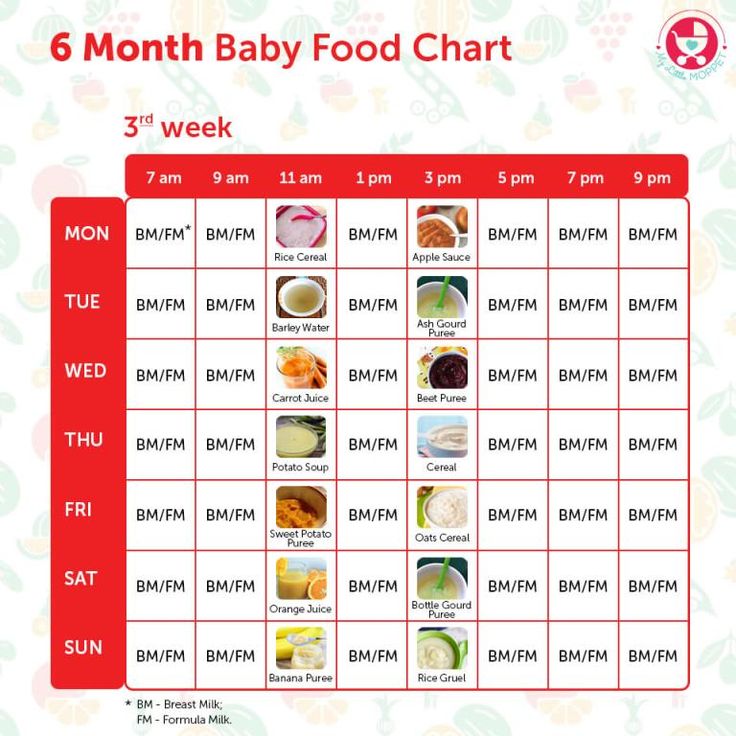 Gradually bring the baby's first complementary foods to the age norm 80-200 g
Gradually bring the baby's first complementary foods to the age norm 80-200 g - If there is an allergic reaction or other intolerance reaction - refuse to introduce this complementary food for three days, if the adverse reaction occurs again - do not give this product, contact your pediatrician.
- Each subsequent new complementary food must be one-component only: marrow, cabbage, broccoli, buckwheat, meat, etc.
- Mixed food dish give when the child has already become acquainted with all the products separately.
- It is not advisable to introduce new products three days before and after vaccinations.
If you are thinking about introducing complementary foods, then your child should already have certain signs of readiness for this:
- Holds head
- Able to stand alone, practically without support, sit on a special high chair with side support
- Opens mouth when a spoonful of food is brought
- Turns away from a spoonful of food when not hungry
- Closes mouth with spoon in mouth holds food in mouth and then swallows rather than pushing or spitting it out
The first complementary foods at 4 months
Age at 4 months as the minimum for the introduction of complementary foods was also chosen because at 4 months the child's gastrointestinal tract becomes more mature: the initially increased permeability of the small intestine mucosa decreases, a series of digestive enzymes, a sufficient level of local immunity is formed, the child acquires the ability to swallow semi-liquid and thicker food, associated with the extinction of the “spoon ejection reflex”.
Therefore, to the question whether it is necessary to give complementary foods to a 3-month-old baby , one can unequivocally answer: no, it's too early!
But 4 months, this is the time when you can think about the introduction of complementary foods. At the same time, it should be remembered that at the age of 4 months, the child has enough mother's milk or a highly adapted milk formula for its full development. In addition, when they talk about complementary foods at 4 months, they usually mean the end of the 4th month of life. It is important to continue breastfeeding in parallel with the introduction of complementary foods.
Video: complementary foods at 4 months
If you introduce complementary foods at the 4th month of the child’s life -this is usually a single-component Puree , if the child does not gain the weight of it well enough well.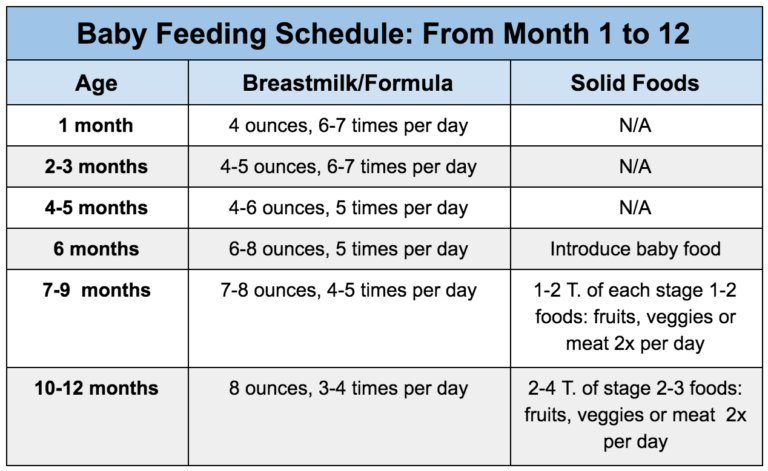 , then it can be gluten-free cereals: rice and buckwheat . It is better to start with vegetable puree. Kids are smart and if he tries a sweeter fruit puree, he can refuse vegetable puree for quite some time and you may have difficulty introducing this very healthy dish.
, then it can be gluten-free cereals: rice and buckwheat . It is better to start with vegetable puree. Kids are smart and if he tries a sweeter fruit puree, he can refuse vegetable puree for quite some time and you may have difficulty introducing this very healthy dish.
What is useful in vegetable supplements and what is the best way to prepare it?
Vegetable puree - for the first feeding can be prepared from cauliflower, zucchini, pumpkin, broccoli - these are low-allergenic products, are among the ten most useful vegetables in the diet of children, contain a large amount of healthy proteins, fiber and vitamins, microelements ! Fiber helps move food through the digestive tract and promote beneficial microflora in the gut. Pectins absorb and remove toxins from the baby's body. Vegetables have a positive effect on the acid-base balance of the body, creating conditions for the proper functioning of all organs and systems.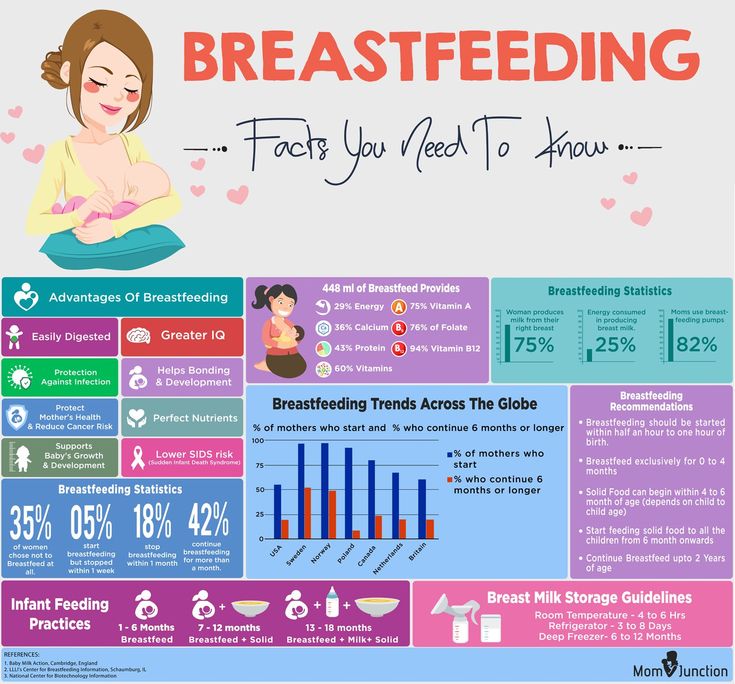
Cauliflower - is a good source of fiber, protein, minerals and vitamins: A, B1, B2, B3 (PP), B6, as well as a small amount of vitamins K, D and tocopherol (vitamin E). In the inflorescences of cabbage there is a lot of magnesium, sodium, potassium, phosphorus, calcium, iron. It contains twice as much iron as green peas, peppers and lettuce. Cauliflower protein is easily digestible and its content is quite high. Cauliflower protein contains essential vitamin U (methionine). It is one of the essential amino acids that cannot be synthesized by the human body. Other essential amino acids are also present in a small amount: arginine, tryptophan.
Zucchini - rich in vitamins and microelements. It contains potassium, magnesium, phosphorus, calcium, vitamins C, B1 and B2 and others, folic acid. Which plays an important role in the processes of hematopoiesis. Zucchini is rich in such important trace elements as iron and copper. They are necessary for the formation of nervous tissue, normalization of metabolism, as well as for the formation of hemoglobin, which is a good prevention of anemia.
They are necessary for the formation of nervous tissue, normalization of metabolism, as well as for the formation of hemoglobin, which is a good prevention of anemia.
Broccoli is a very useful vegetable, which is a type of cauliflower. Pleasant soft taste and good digestibility of the product, unique composition have a beneficial effect on the health of both adults and children. Eat unopened cabbage inflorescences. This is also a low-allergenic vegetable, rich in protein, fiber, vitamins, calcium, iron, trace elements and even phytoncides. The content of calcium and magnesium is sufficient to balance the functioning of the nervous system, ensure the normal regulation of the child's sleep and wake cycle, and good stress resistance. A child with such nutrition becomes calmer, less excited and naughty.
Broccoli is the leader in choline and methionine content. Only 50 g of broccoli provides the baby with a full set of nutrients for a day.
Pumpkin is the largest vegetable on Earth. It is one of the ten most useful vegetables in the diet of children, contains a large amount of useful proteins, fiber and vitamins, including beta-carotene, vitamin C, E, K, iron, potassium, magnesium, trace elements that are indispensable for children's nutrition, as they strengthen immunity and help fight inflammation, have a beneficial effect on the nervous system. By the content of carotene, pumpkin exceeds carrots by 5 times.
It is one of the ten most useful vegetables in the diet of children, contains a large amount of useful proteins, fiber and vitamins, including beta-carotene, vitamin C, E, K, iron, potassium, magnesium, trace elements that are indispensable for children's nutrition, as they strengthen immunity and help fight inflammation, have a beneficial effect on the nervous system. By the content of carotene, pumpkin exceeds carrots by 5 times.
Vitamins and microelements contained in pumpkin help the child grow, provide healthy sleep, are responsible for the condition of the skin and eyes, improve metabolic processes, and accelerate the removal of harmful substances from the child's body. Due to its beneficial qualities, pumpkin can be one of the first types of complementary foods for an infant.
All vegetable purees have a specific vegetable smell, this is absolutely normal
0034
Introduction of vegetable puree
Vegetables should be introduced into the child's menu gradually.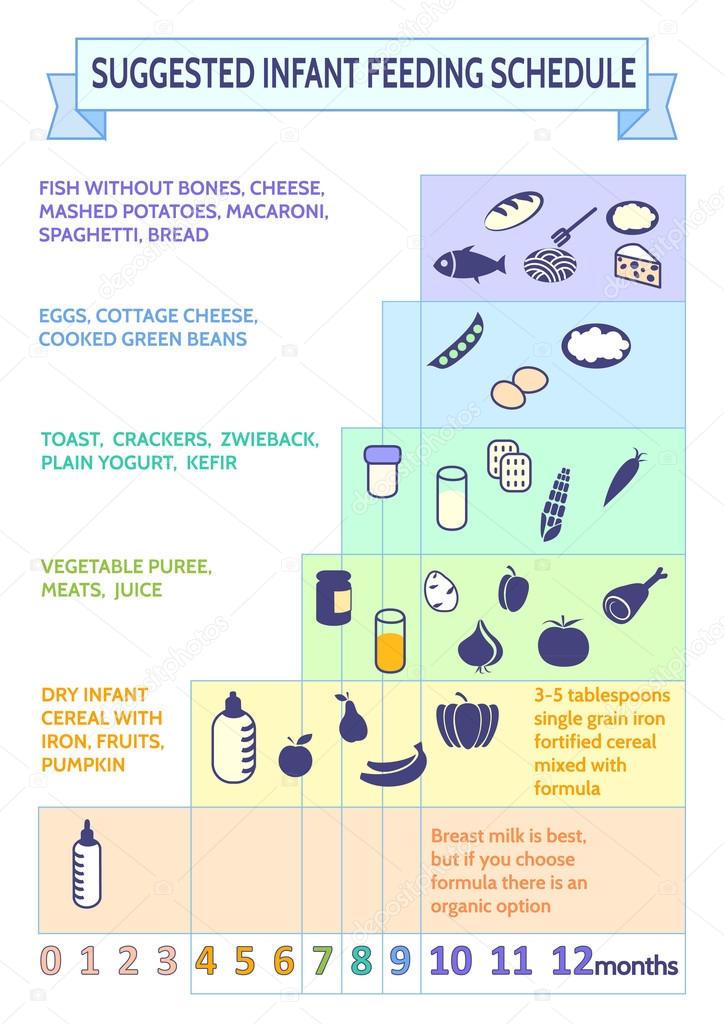 Start giving each new vegetable in the form of a monocomponent puree in the amount of ½ teaspoon, preferably at breakfast, so you can track the manifestations of food allergies or intolerance reactions to this product. If all is well, then the next day, offer him a teaspoon. So gradually you need to bring the portion to 50-100 grams. A serving of vegetable puree per day for an 8-month-old baby is approximately 80 grams. In a year, you can increase up to 150 grams. The next product can be administered no earlier than 4-5 days later. If a child has skin rashes, his stool has changed, then you need to remove the product from the diet and consult a pediatrician.
Start giving each new vegetable in the form of a monocomponent puree in the amount of ½ teaspoon, preferably at breakfast, so you can track the manifestations of food allergies or intolerance reactions to this product. If all is well, then the next day, offer him a teaspoon. So gradually you need to bring the portion to 50-100 grams. A serving of vegetable puree per day for an 8-month-old baby is approximately 80 grams. In a year, you can increase up to 150 grams. The next product can be administered no earlier than 4-5 days later. If a child has skin rashes, his stool has changed, then you need to remove the product from the diet and consult a pediatrician.
If the child does not like the dish, for example, broccoli, do not give up and continue to offer this vegetable in small quantities - 1-2 spoons a day, maybe not even once, but 2-3 times before meals, and after 7 - 10, and sometimes 15 days, the baby will get used to the new taste. This diversifies the diet, will help form the right taste habits in the child.
Fruit puree introduction
Fruit puree is a definite alternative and addition to vegetables. It can be made from apples, bananas - by the way, do you know what a berry is?, sweet varieties of pears. These fruits contain substances useful for babies, vitamins and minerals, including iron, which is extremely necessary for children. Prune puree is somewhat separate, it has a good effect on the baby's digestion, especially with a tendency to constipation, and, of course, also contains many useful substances.
Porridges in the nutrition of a child in the first year of life.
Porridge can be introduced into the baby's diet at the end of 4 months or at the fifth, sixth month of life. As a rule, they go as a second food after vegetable or fruit puree. But if your child is not gaining weight very well, or you have been feeding your child with breast milk or infant formula until almost the end of 6 months, then complementary foods can be started with the introduction of cereals.
It is important to start with one-component, low-allergenic cereals which does not contain gluten : this is buckwheat, rice, corn porridge .
gluten-containing cereals include: wheat, oats, rye, barley, millet .
According to modern data , the period of introduction of gluten into the child's diet is not of fundamental importance, but the latest recommendations draw attention to the fact that its amount in the baby's diet should not be large. Therefore, it is better to add semolina and oatmeal to other porridge in a limited amount, and not to give it on its own. No relationship was found between the timing of the start of complementary foods that contain gluten and the development of celiac disease in a child. If your child hasn't tried porridge yet, start with a dairy-free, gluten-free, one-ingredient buckwheat or rice porridge.
Rice - very useful for growing baby. It has a low content of vegetable proteins, therefore it is easily digested and is especially useful for toddlers with unstable stools. Rice has a high nutritional value and, to a certain extent, protects the delicate intestines of the baby due to its enveloping effect. This is a hearty and nutritious dish with a good content of carbohydrates and proteins, potassium and magnesium, calcium and phosphorus, beneficial amino acids and vitamins. It replenishes energy costs, energizes and gives strength. Rice is not recommended for overweight children and those who suffer from severe constipation.
Gluten-free buckwheat porridge - very nutritious and rich in iron, fiber, rich in various vitamins and microelements. This is also a good option for starting a child's acquaintance with adult food. These porridges can be prepared with water, breast milk, milk formula, which your child is used to.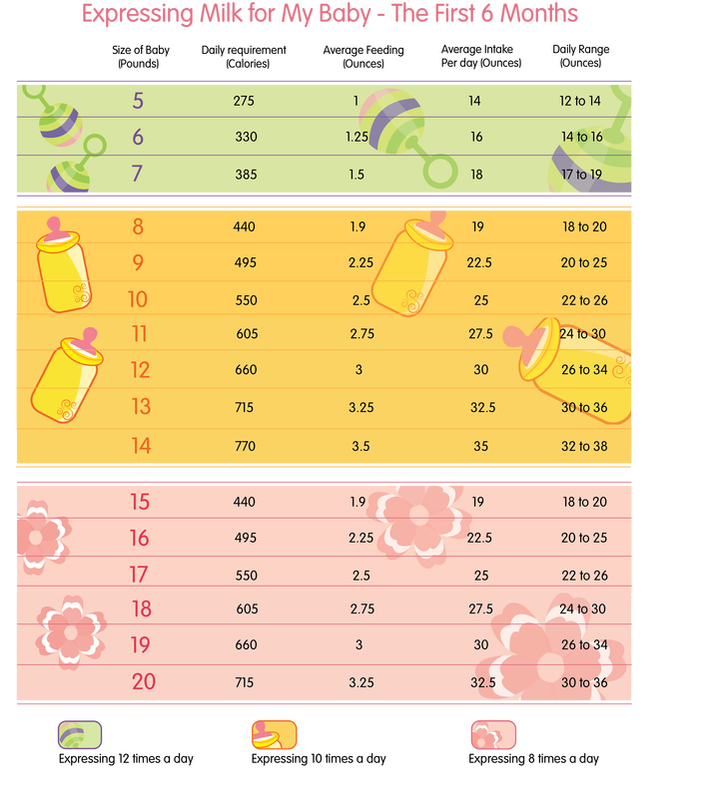 No need to add salt and sugar.
No need to add salt and sugar.
Rules for introducing porridge into baby food
If the child already eats porridge from 5 months, then at 6 months you can offer a more complex porridge - for example, rice porridge with apricot or raspberries, rice porridge with banana (this is very successful a combination both in taste and in its properties) or even more complex porridge - corn-rice with banana.
Over time, you can start adding apple, banana, pear, plum and prunes, apricot and dried apricots, broccoli, carrots, berries to porridge, , provided that the child is not allergic to them.
The rules for introducing cereals are the same as for vegetable puree. In order for the child to get used to the new product and its consistency more easily, first prepare 5% porridge (5 g of cereal per 100 g of water), if you make it yourself. Porridge is usually cooked with water, but can be made with breast milk, infant formula.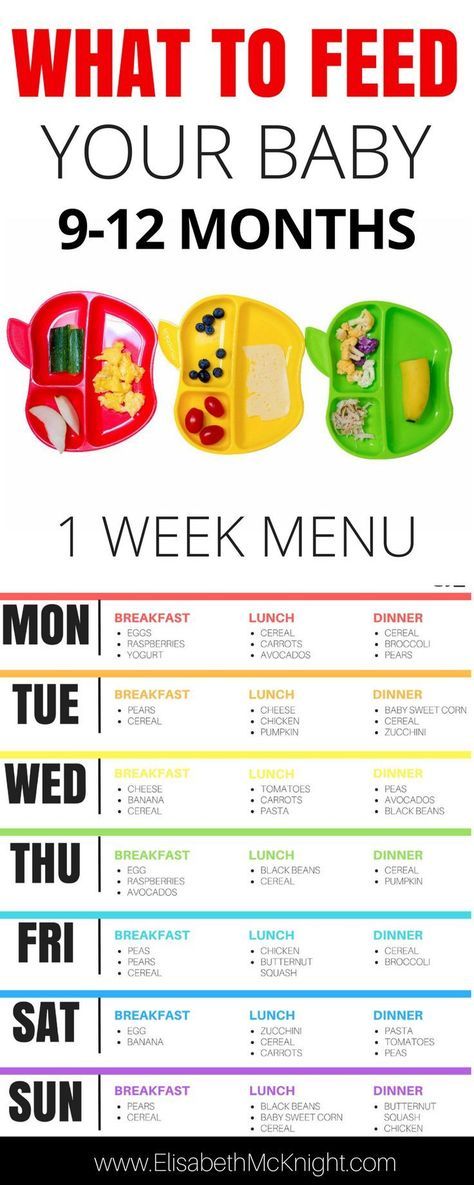 First, give the baby one teaspoon, then, within 7-10 days, bring the volume of porridge of the same percentage to the full volume of feeding (150 g). If all this time the porridge is well tolerated, i.e. there are no skin rashes, the child has stable stools, they switch to a gradual (starting from 20-30 g) introduction of porridge of the same cereal, but already at a 10% concentration (10 g of cereal per 100 g of water). In other words, a thicker porridge is administered no earlier than 7-10 days from the beginning of the introduction of porridge. The complete introduction of 10% porridge to the baby is also carried out in 7-10 days. The third week falls on the complete addiction of the child to a new dish. Only after that you can introduce a new cereal (in the form of 10% porridge) or the next complementary foods.
First, give the baby one teaspoon, then, within 7-10 days, bring the volume of porridge of the same percentage to the full volume of feeding (150 g). If all this time the porridge is well tolerated, i.e. there are no skin rashes, the child has stable stools, they switch to a gradual (starting from 20-30 g) introduction of porridge of the same cereal, but already at a 10% concentration (10 g of cereal per 100 g of water). In other words, a thicker porridge is administered no earlier than 7-10 days from the beginning of the introduction of porridge. The complete introduction of 10% porridge to the baby is also carried out in 7-10 days. The third week falls on the complete addiction of the child to a new dish. Only after that you can introduce a new cereal (in the form of 10% porridge) or the next complementary foods.
Video: feeding porridge
You need to give porridge with a spoon, it is better in the morning for breakfast. After porridge at the stage of its introduction, the child should be offered breast or milk formula. With artificial feeding, the volume of the mixture after a portion of porridge should be such that, together with porridge, it is 200 ml with five meals a day.
After porridge at the stage of its introduction, the child should be offered breast or milk formula. With artificial feeding, the volume of the mixture after a portion of porridge should be such that, together with porridge, it is 200 ml with five meals a day.
Norms for the introduction of cereals
In the future, the volume of the portion of porridge gradually increases, amounting to:
- 7-8 months - 160-170 ml
- 8-9 months - 170-180 ml
- 9-12 months - up to 200 ml (there is a complete replacement of one feeding of the child with complementary foods)
Cereal schedule
- Day 1 – 1 teaspoon (5 g)
- Day 2 - 2 teaspoons (10 g)
- Day 3 - 3 teaspoons (15 g)
- Day 4 - 4 teaspoons (20 g)
- Day 5 - 50 ml (50 g)
- Day 6 - 100 ml (100 g)
- Day 7 - 150 ml (150 g)
Meat complementary foods - the rules for introducing meat into the child's diet
Meat is usually the third, very important product of complementary foods, after vegetables and cereals.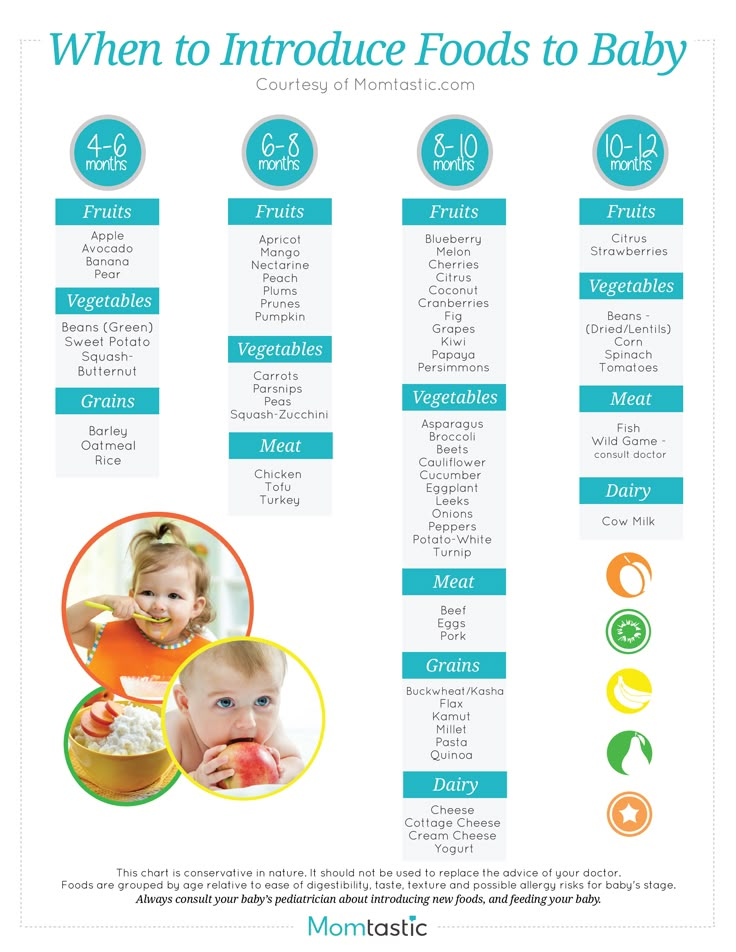 The meat contains amino acids, complete animal protein, B vitamins (B1, B2, B6 and B12), heme iron, potassium, calcium, zinc, phosphorus, which are necessary for the growth and development of the child. It is very important to understand that mashed meat contains iron, which is easily absorbed. And the addition of meat to vegetables improves the absorption of iron from them, from vegetables.
The meat contains amino acids, complete animal protein, B vitamins (B1, B2, B6 and B12), heme iron, potassium, calcium, zinc, phosphorus, which are necessary for the growth and development of the child. It is very important to understand that mashed meat contains iron, which is easily absorbed. And the addition of meat to vegetables improves the absorption of iron from them, from vegetables.
Iron deficiency can seriously affect the intellectual development of a child, his immunity, hematopoiesis. Since your task is to raise a healthy and intelligent child, meat complementary foods must be introduced without fail and in a timely manner.
Heme iron - found in meat products and easily digestible (red meat-veal, liver), absorption is about 25%.
Non-heme iron - found in plant foods (beans, beans, lentils, peas, nuts, tomatoes, cauliflower, green leafy vegetables, apples, dried fruits, but it is absorbed from plants much worse - only 3-5% Iron absorption from other animal products (eggs, fish) is 10-15%. 0003
0003
It is important to know that human milk enhances , while cow's milk reduces iron absorption .
Timing of the introduction of meat complementary foods
It is advisable to introduce meat puree to a child aged 6-8 months old . This, to some extent, depends on when cereals and vegetable/fruit purees were introduced. if your baby has been eating vegetables and cereals since 4 months, meat can be introduced at 6 months. From 7 months it can be administered if the child is not gaining weight. From 8 months to children who started complementary foods at 6 months.
Children at risk of anemia are advised to introduce meat earlier at 5-6 months of age.
It has been proven that only the daily use of children's enriched porridge and meat puree can fully meet the needs of children in iron, zinc and other micronutrients.
You can start meat complementary foods with lean beef, veal , but better with less allergenic poultry meat ( turkey, chicken ), or rabbit, these are the most easily digestible meats.
Goose and pork are fatty for a baby, and the meat of duck and other birds of water bodies is also not suitable for the first feeding. They are recommended to give only after 3 years;
Horsemeat is perfect for your baby. The product is rich in carbohydrates and proteins, but it is almost impossible to find horse meat for sale.
Meat should be introduced into the child's diet gradually, at lunchtime, at first, a quarter of a teaspoon and, gradually adding, bring it to the daily norm: At 8 months, about 50 g, at 9months-60-70 g.
Video: Feeding meat
Scheme for the introduction of puree
- 1 day ¼ of the vegetables
- Day 2 - ½ teaspoon
- Day 3 - 1 teaspoon
- Day 4 - 2 teaspoons
- Day 5 - 3 teaspoons
- Day 6 3-4 teaspoons + vegetables
At first, it is better to give meat with vegetable puree, which the child has already eaten, so he adapts better to the new product, and iron is better absorbed.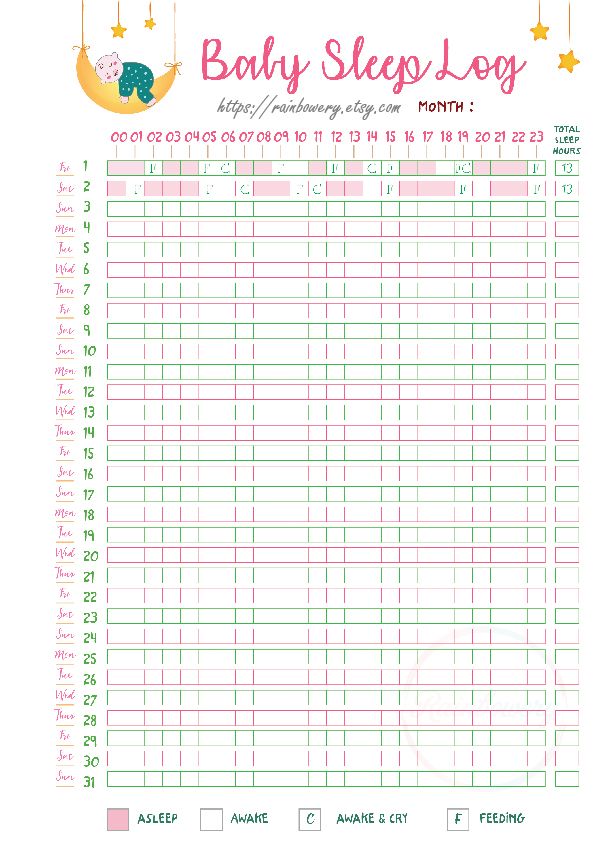 Children at the end of the first year of life can already be given 3 varieties of mashed meat.
Children at the end of the first year of life can already be given 3 varieties of mashed meat.
Baby menu at 7-8 months
At 7-8 months you can start giving children 0 baby cottage cheese 9003 Start with 1/2 teaspoon. Within a month, the daily volume of cottage cheese consumption by a baby can be increased to 30-40 g. In addition, a child of 8 months is recommended to give sour-milk infant formula. But ordinary yogurt from the store should not be given. At this age, the child should receive 5 g of butter and 5 g (1 teaspoon) of vegetable oil, ¼- yolk - 2-3 times a week.
Baby's menu at 9 months old
At the age of 9 months old Your baby is already familiar at this age already usually familiar with: , egg yolk . You may have already met meat . Therefore, at this age, they usually give already more complex purees and porridges, less homogenized, of various tastes , gradually preparing him for adult nutrition, increasing the variety and quantity of complementary foods. It is desirable to feed the baby at the table with other family members, he must see how his parents eat with pleasure, he learns from them. The amount of food offered should be based on the principles of actively encouraging the baby to eat, it is necessary to continue to gradually change the consistency and increase the variety of complementary foods, adhering to the recommended frequency of introducing complementary foods.
It is desirable to feed the baby at the table with other family members, he must see how his parents eat with pleasure, he learns from them. The amount of food offered should be based on the principles of actively encouraging the baby to eat, it is necessary to continue to gradually change the consistency and increase the variety of complementary foods, adhering to the recommended frequency of introducing complementary foods.
At this age, the child usually gets complementary foods 3 times a day . His diet depends on the age of the start of complementary foods. If the baby began to give new food at 4-5 months, the list of allowed foods will be much wider than if this happened at 6-7 months. Therefore, all this is very individual, there are no absolutely rigid frameworks and recommendations. On the Internet you will find a lot of different advice on baby food, if you are not sure about something, it is better to consult your pediatrician.
From vegetables the baby can be given what he ate before, mixing them: pumpkin, zucchini, cauliflower, broccoli, carrots and others, adding 1 tsp. vegetable oil . If the baby does not have skin reactions, then you can give beets . It is also possible to give two-, three-component vegetable purees and soups , but only on the condition that he is already familiar with these products and he has not had a reaction to them.
vegetable oil . If the baby does not have skin reactions, then you can give beets . It is also possible to give two-, three-component vegetable purees and soups , but only on the condition that he is already familiar with these products and he has not had a reaction to them.
If you have introduced complementary foods, then you need to remember that water is an important part of baby food. You can use purified water or special water for children .
In addition, at 9 months you can give special baby wheat cookies , which the baby will be happy to eat on his own as an adult, white wheat bread, this improves hand motility, improves eating skills, but at the same time he must be supervised.
At this age, you can start giving fish puree from low-fat varieties: river perch, pollock, hake, haddock, pike perch, saithe - start with ½ teaspoon, bringing up to 40-50 g , give at lunchtime instead of mashed meat, 1-2 times a week.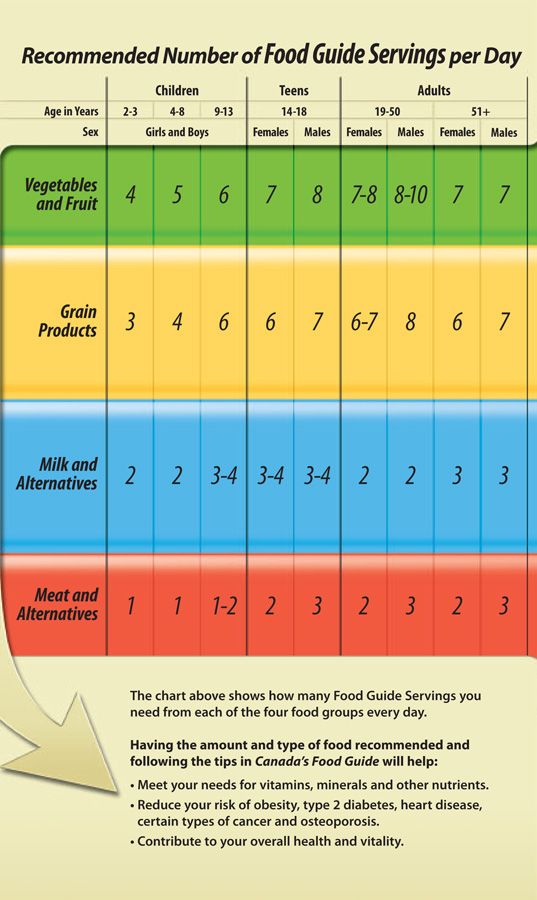 But a number of pediatricians do not advise giving it up to a year, it is a useful, but highly allergenic product.
But a number of pediatricians do not advise giving it up to a year, it is a useful, but highly allergenic product.
Baby menu at 10 months
B 10 months usually 2 times a day the child receives mother's breast or special milk formulas . Various porridges : buckwheat, rice, corn, oatmeal, wheat, semolina porridge . add 5-10 g of butter to cereals. At this age, it is already possible to make complex cereals from 2-3 cereals with which the child is familiar, add various fruits, vegetables: apple, banana, pear, plum and prunes, apricot and dried apricots, broccoli, carrots, berries , provided that the child is not allergic to them, or use ready-made cereals with fruit.
From vegetables the baby can be given what he ate earlier, mixing them: pumpkin, zucchini, cauliflower, broccoli, carrots, beets and others, adding 1 tsp.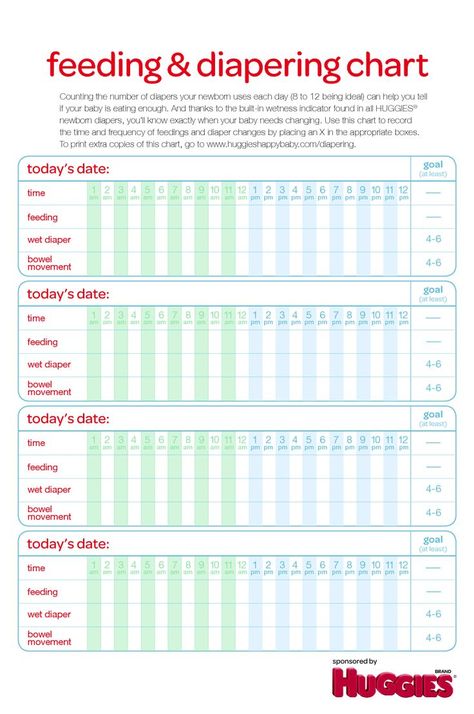 vegetable oil . It is also already possible to give two-, three-component vegetable purees and soups, but only on condition that he is already familiar with these products and he did not have a reaction to them.
vegetable oil . It is also already possible to give two-, three-component vegetable purees and soups, but only on condition that he is already familiar with these products and he did not have a reaction to them.
At this age, the baby already usually eats about 40-50 g of baby meat puree from chicken, turkey, rabbit , with good tolerance to cow's milk proteins from veal or beef. If he has been eating meat for a month or more, you can start giving him two-component meat purees , for example from chicken and turkey.
At this age, fish puree from low-fat varieties is usually started: river perch, pollock, hake, haddock, zander, pollack with ½ teaspoon, bringing to 40-50 g, following the reaction of the child, it is better to give at lunch time instead of meat puree, 1-2 times a week .
At 10 months, children's cottage cheese should be given 2 times a week.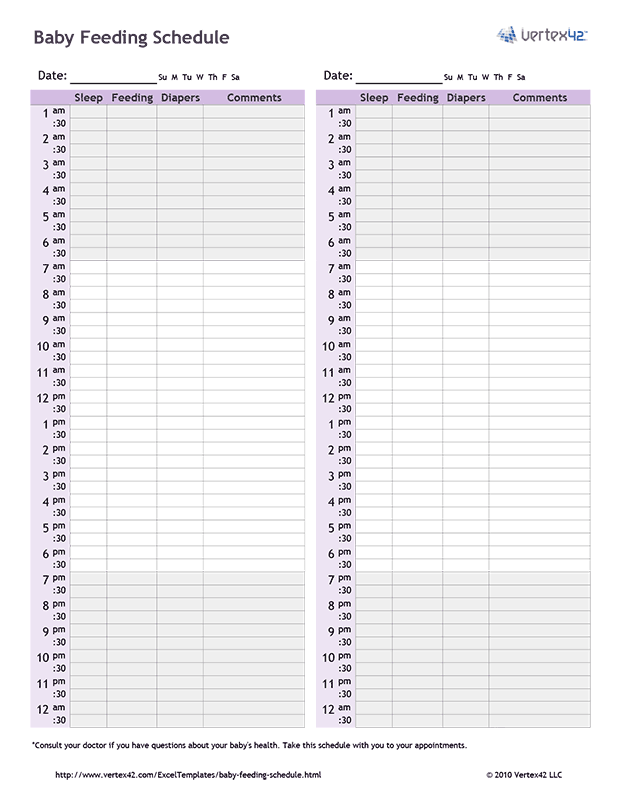 Start with 1/2 teaspoon if you have not given it before, the daily amount of cottage cheese at this age 40-50 g .
Start with 1/2 teaspoon if you have not given it before, the daily amount of cottage cheese at this age 40-50 g .
It is recommended to give special sour-milk baby formulas.
At this age, the child can receive 5-10 g of butter and 5 g (1 teaspoon) of vegetable oil, and 2-3 times a week½ - yolk .
Child's menu at 1 year old
The child is one year old. He has already grown up, he already has 6-10 teeth, with which he gnaws everything he sees, he is interested in chewing food, his digestive enzymes already work well and he has already become acquainted with various products: vegetable and fruit purees, various cereal cereals, meat and fish, sour-milk mixtures. In fact, he is already prepared for the transition to a more adult diet. In a year, changing the diet involves turning to new products and gradually changing the way they are prepared and the degree of grinding.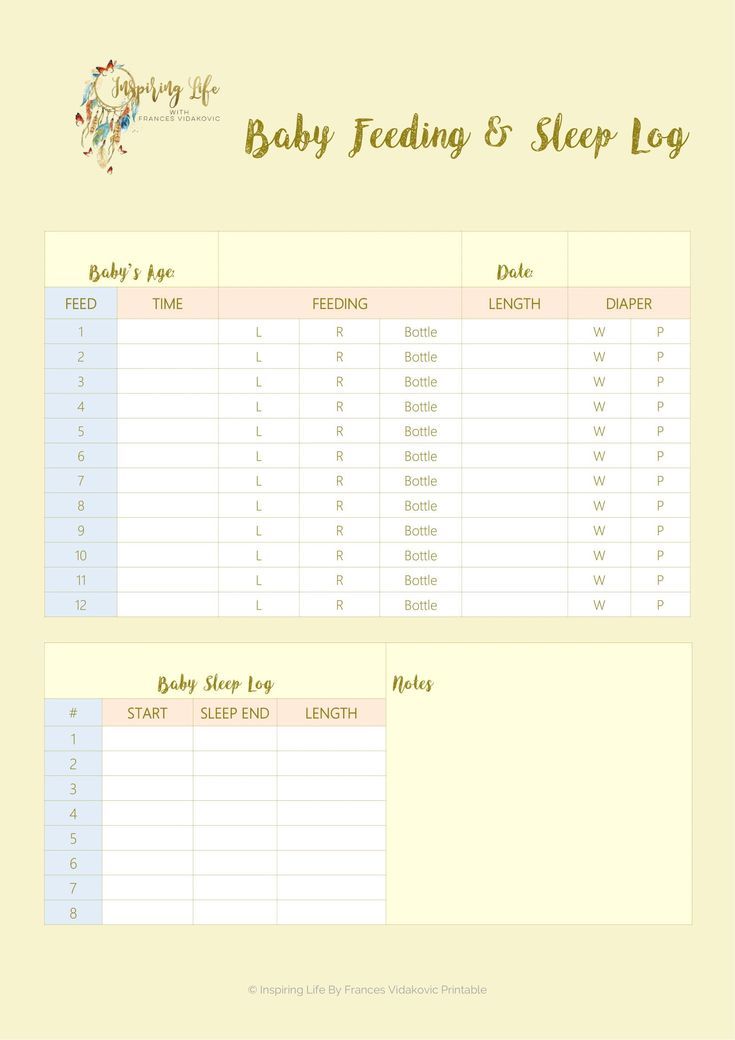
You need to eat 5 times a day with an interval 3.5-4 hours .
semi-liquid dishes should still remain the basis of nutrition, but not only mashed dishes, but also containing small pieces of food . Too dry food should not be given to the baby yet, as he may have difficulty swallowing.
In the year the child is already trying to eat with his hands and he should be encouraged to do so. Finely chopped, soft foods can be given eg: small pieces of soft fruit, vegetables, cheese, well-cooked meat, pasta , etc. and foods that dissolve quickly, children's biscuits, children's bread - as food with the help of hands.
Must avoid products that can enter the respiratory tract and cause asphyxiation - sausages and other hard meat products , nuts (especially peanuts), grapes, raisins, raw carrots, popcorn, round candies . Hold off on this for now.
Hold off on this for now.
In a year, part of the children are without mother's milk. But if your baby is still not weaned - do not rush, if possible, give him a breast before bed at night. You can also breastfeed between meals. At this age, the child receives all the main vitamins and minerals from food, but he can get a number of biologically active components from breast milk.
Dairy products
Dairy products still occupy an important place in the child's diet, it is a source of calcium, B vitamins, protein, milk sugar and fat. It is better to use special baby milk (marked with a triple on the package), baby fermented milk products: kefir, yogurt in total 500-600 ml per day .
Cottage cheese
The child should be given cottage cheese. The daily dose of cottage cheese after 1 year can be increased up to 70 g per day . It can be given pureed or combined with fruit puree, pudding, casserole. This contributes to the development of chewing skills.
It can be given pureed or combined with fruit puree, pudding, casserole. This contributes to the development of chewing skills.
Butter
Butter can be added to cereals or smeared on wheat bread, cookies in a dose of up to 12 g per day.
Low fat sour cream and cream
After 1 year, you can give low-fat sour cream and cream in small quantities.
Vegetables
Every year a child must be given various vegetables, it is good to combine them with protein products, meat . The vegetable diet can now be diversified with green peas, tomatoes, turnips, beets, carrots, spinach in the form of mashed potatoes. Legumes are still better not to give.
Fruits and berries
After 1 year, you can gradually introduce the baby to new fruits and berries: strawberries, cherries, cherries, kiwi, currants, gooseberries, chokeberries, sea buckthorn, raspberries, blackberries, cranberries, blueberries, lingonberries and even citrus fruits .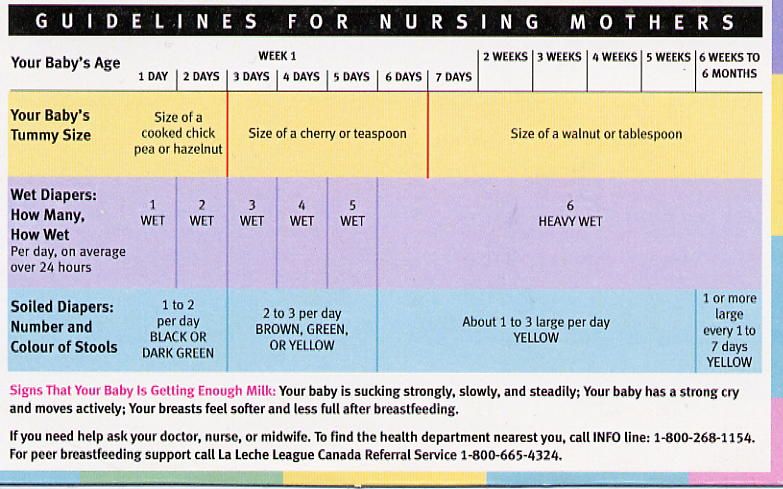 But do it gradually, watching the reaction of the child. Berries with a dense peel (gooseberries) are best mashed, while soft juicy fruits (peaches, strawberries, apricots, kiwi) can be offered to the baby in pieces.
But do it gradually, watching the reaction of the child. Berries with a dense peel (gooseberries) are best mashed, while soft juicy fruits (peaches, strawberries, apricots, kiwi) can be offered to the baby in pieces.
Daily dose of fruits - approx.
Meat products
Meat products can be given in the form of steam cutlets, meatballs, meatballs, meat soufflé and pudding in an amount up to 100 g daily - beef, veal, lean pork, rabbit, turkey, chicken.
Fish
Fish can be given once or twice a week for 30-40 g per meal as a substitute for meat dishes
Eggs
Chicken, quail eggs give boiled or in the form of omelettes in milk, you can try with vegetables.
Kashi
Porridge can be cooked from rice, oatmeal, buckwheat, corn, millet, semolina.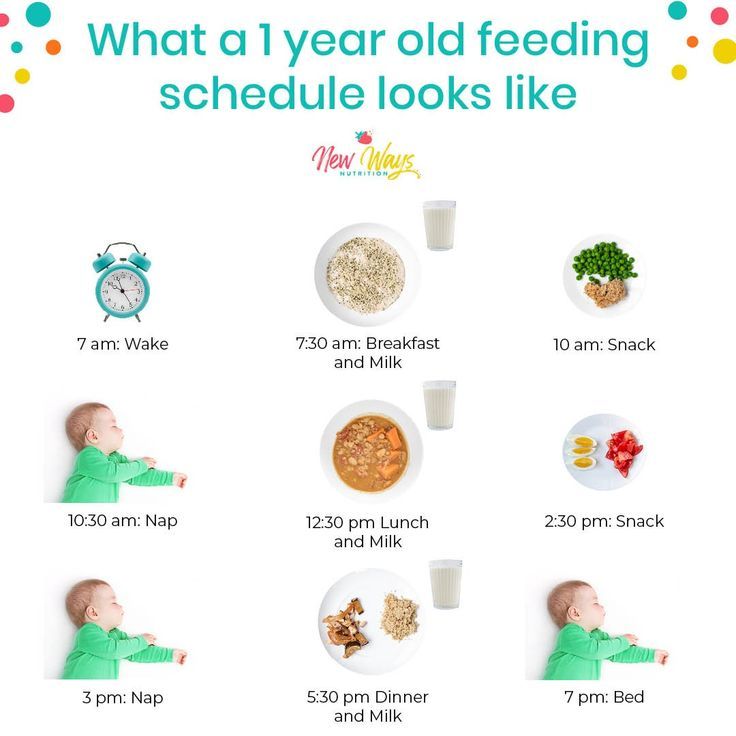 At this age, they should still have a uniform consistency, so it will be easier for him to swallow. You can use ready-made industrial, children's instant cereals, for example, various multi-cereal cereals, in which fruits, crackers, cereals have already been added. Give 1 time per day.
At this age, they should still have a uniform consistency, so it will be easier for him to swallow. You can use ready-made industrial, children's instant cereals, for example, various multi-cereal cereals, in which fruits, crackers, cereals have already been added. Give 1 time per day.
Water
Be sure to give the child to drink clean water, better for children in bottles, as much as he wants . In addition to her baby can drink vegetable and fruit juices, dairy products, compotes, weak tea.
Do not give:
do not give confectionery and sweets . From sweets at this age, you can sometimes give marmalade, dried fruits and cookies.
Do not give sausages and sausages , they are rarely prepared from high quality meats and are rich in various food additives
Calories and volume
0031 1200 ml .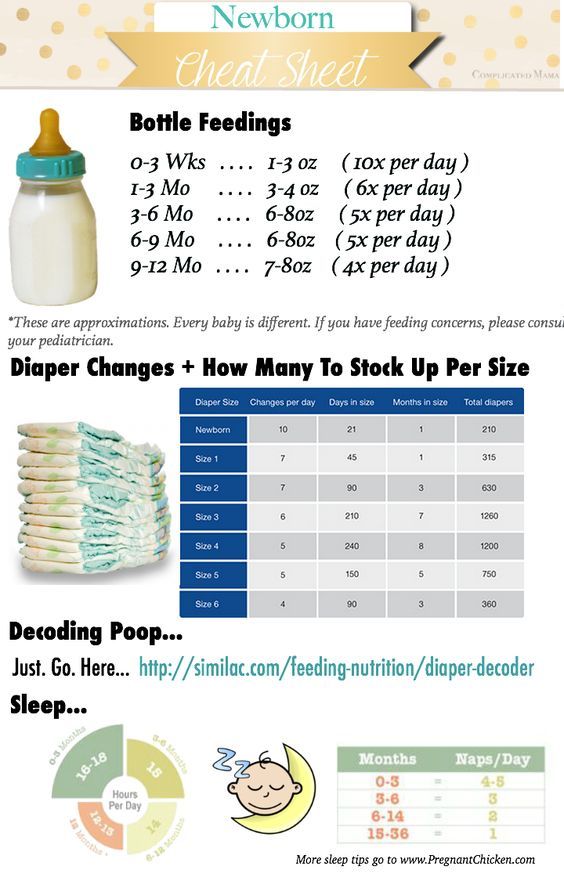

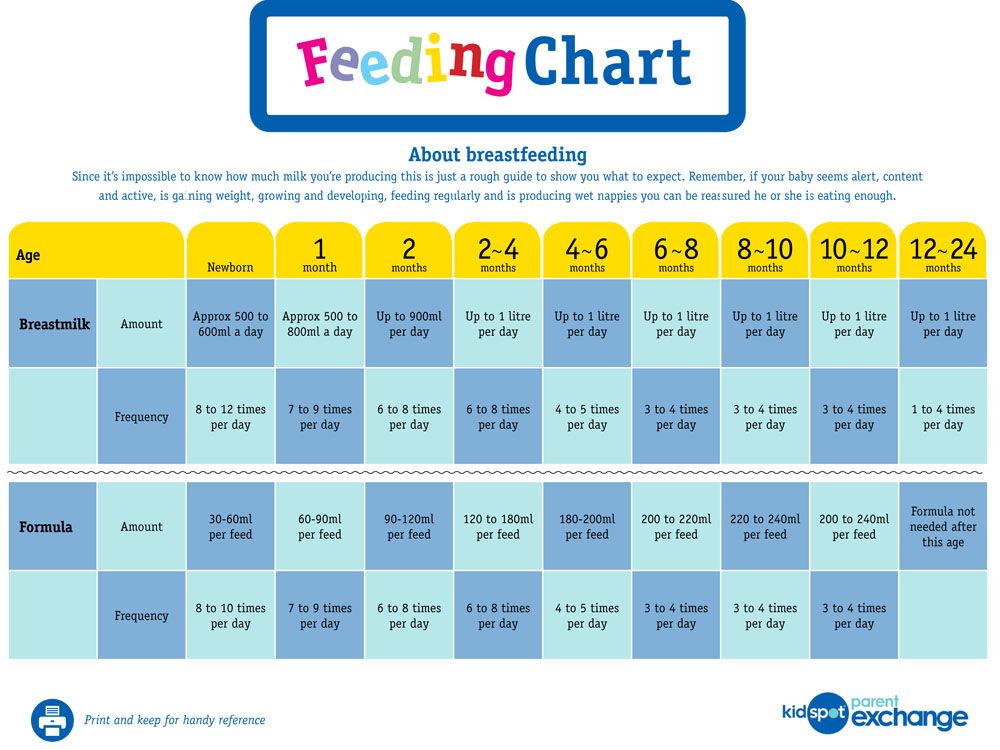 Otherwise, they will fill up and won’t want to eat solid foods. Too much milk can also lead to iron deficiency anemia.
Otherwise, they will fill up and won’t want to eat solid foods. Too much milk can also lead to iron deficiency anemia.









